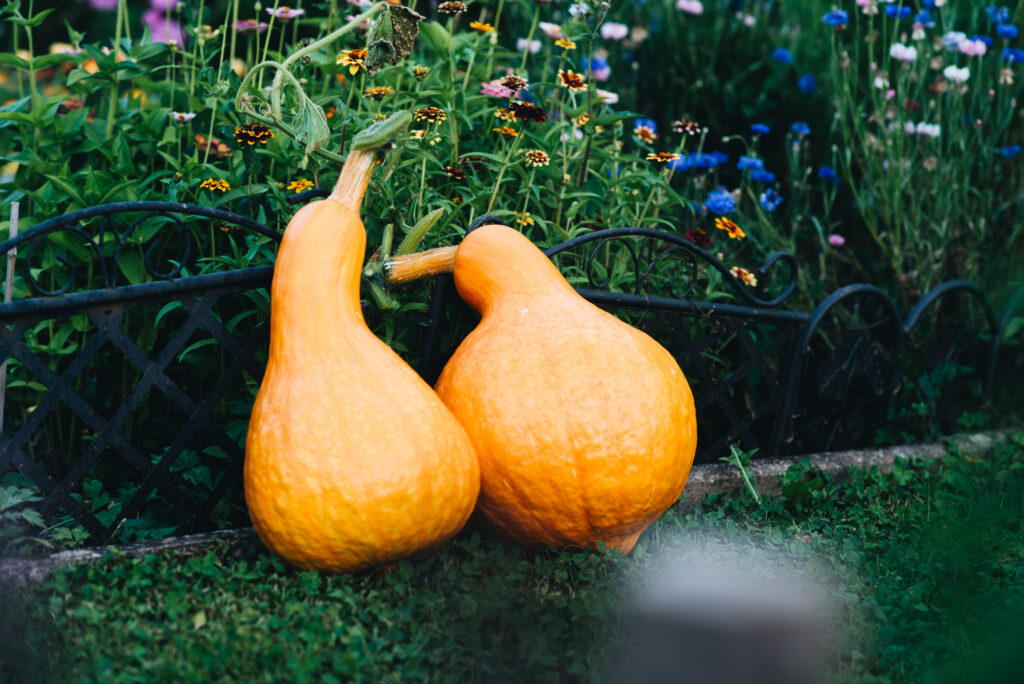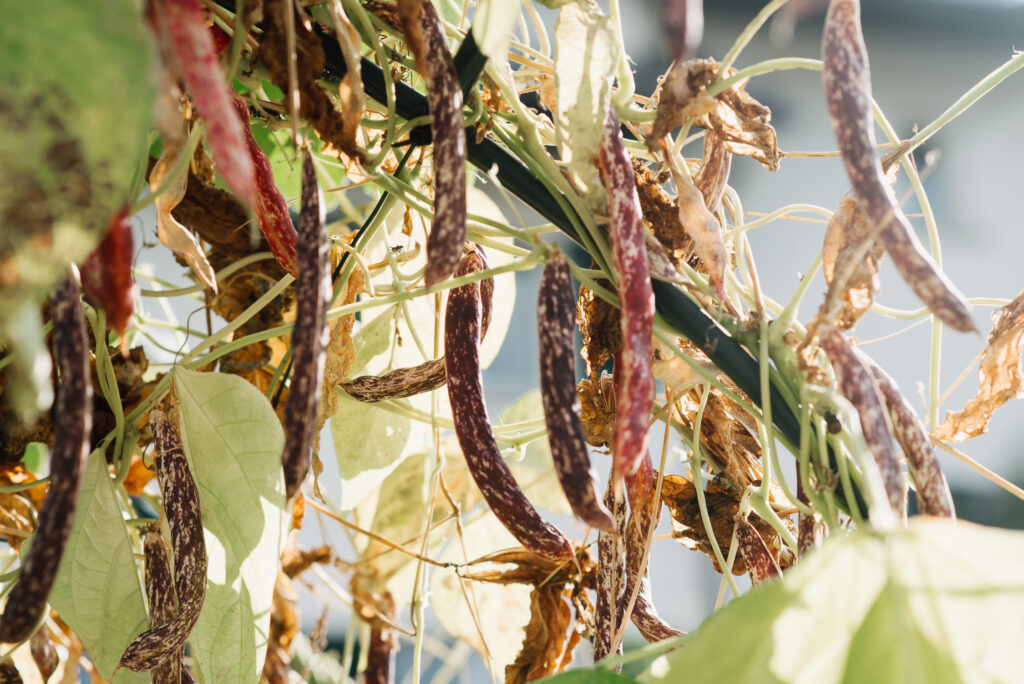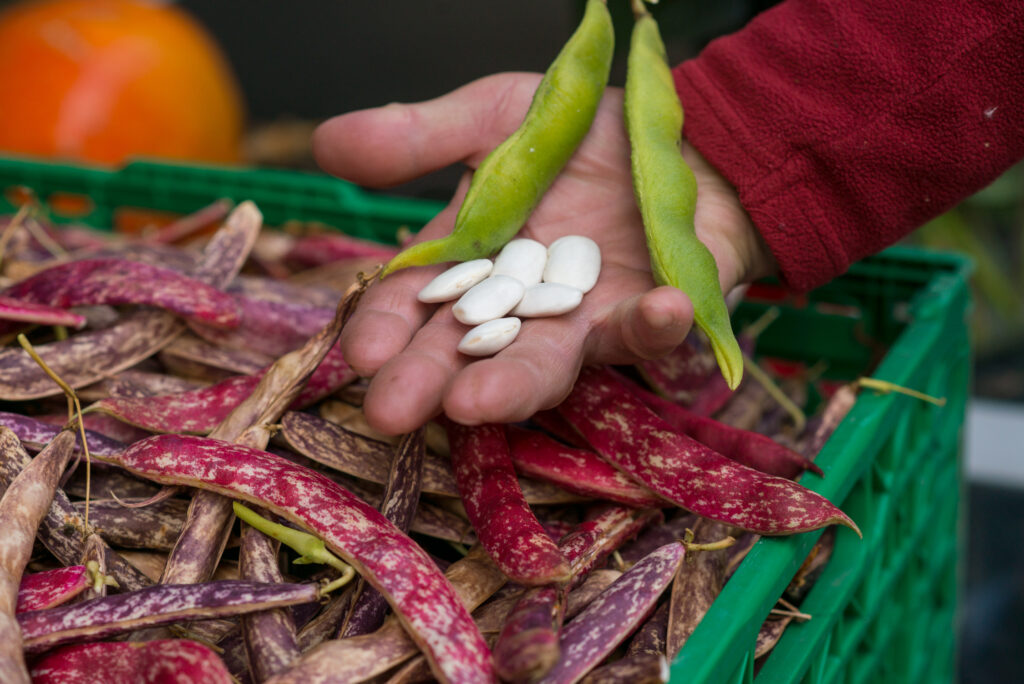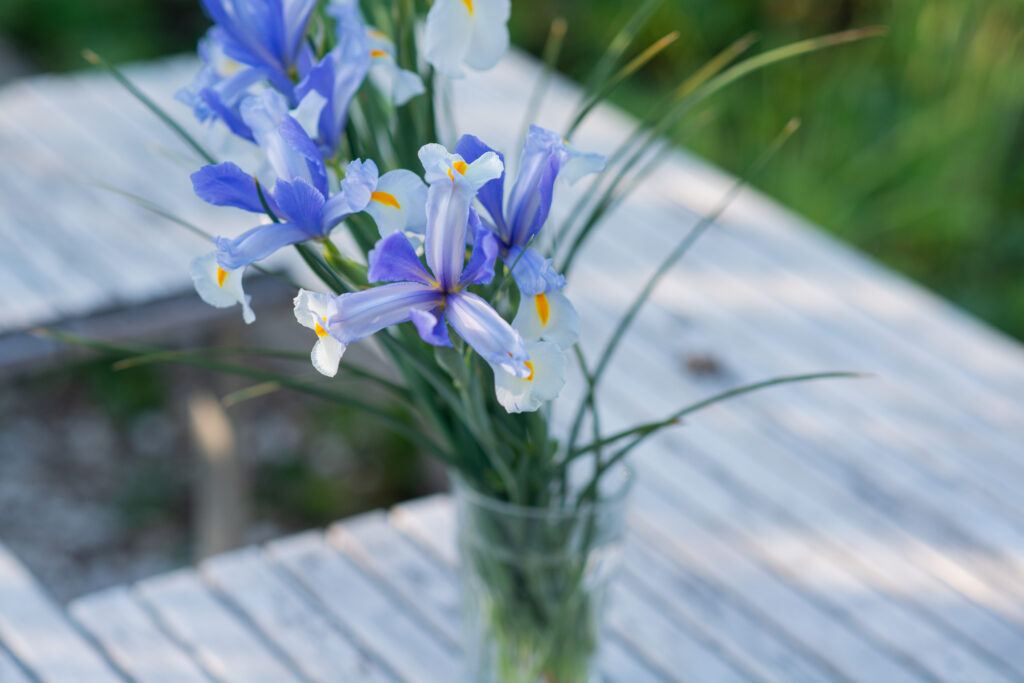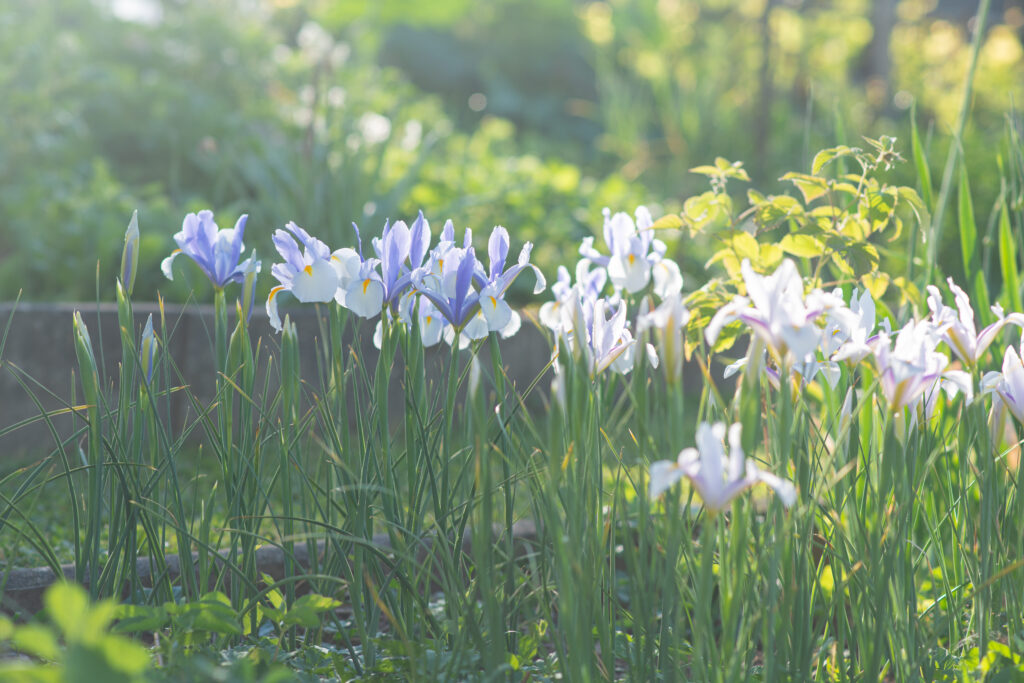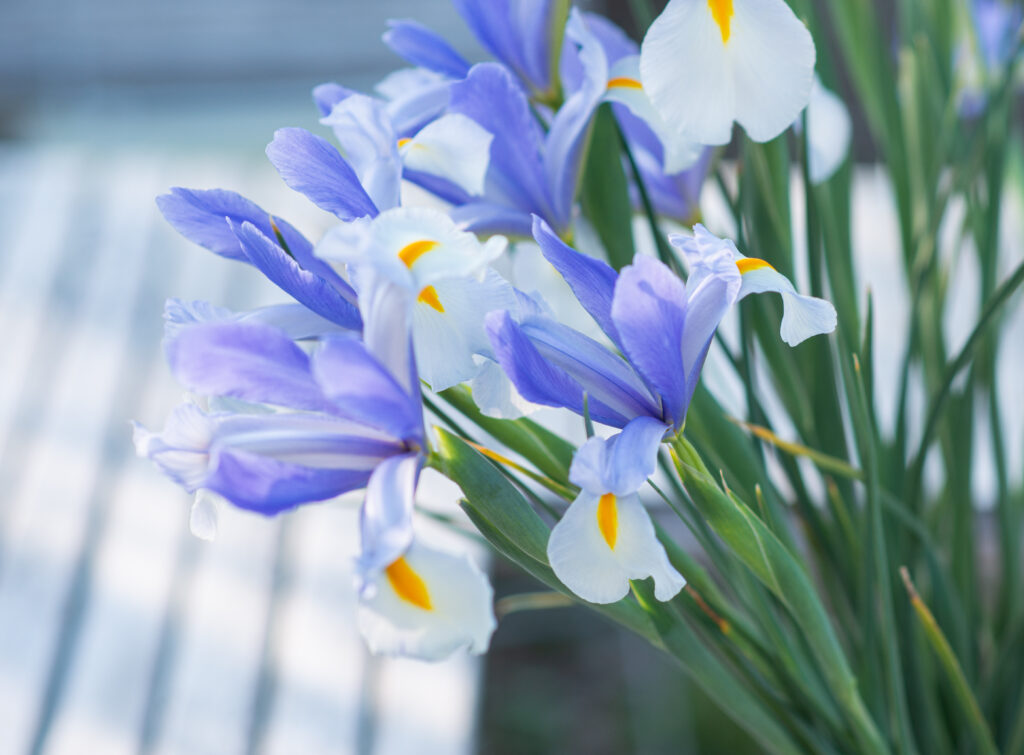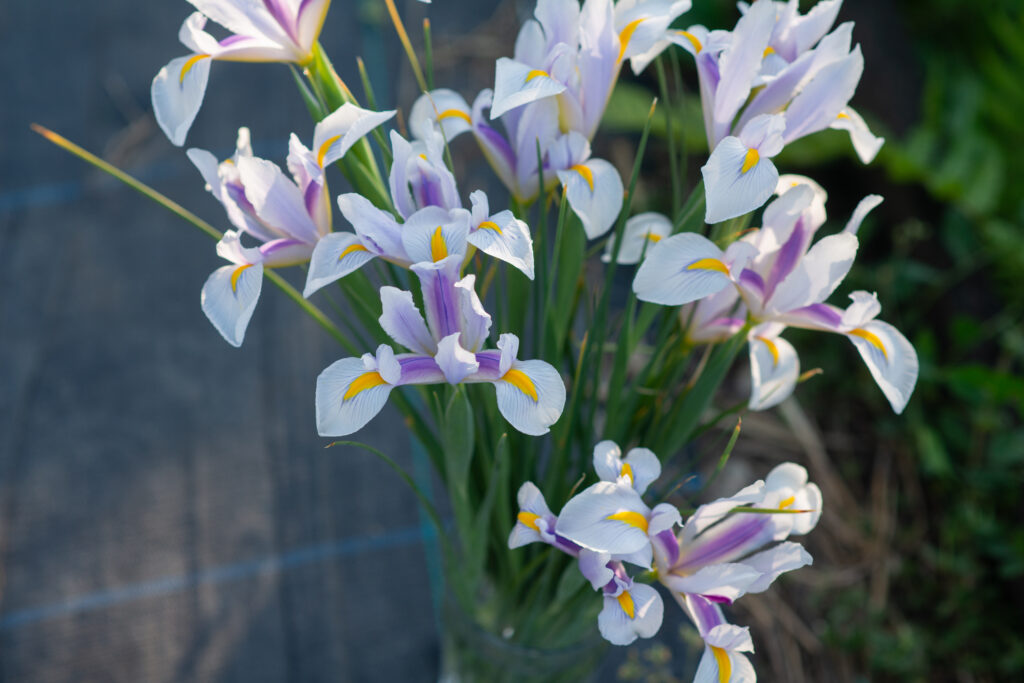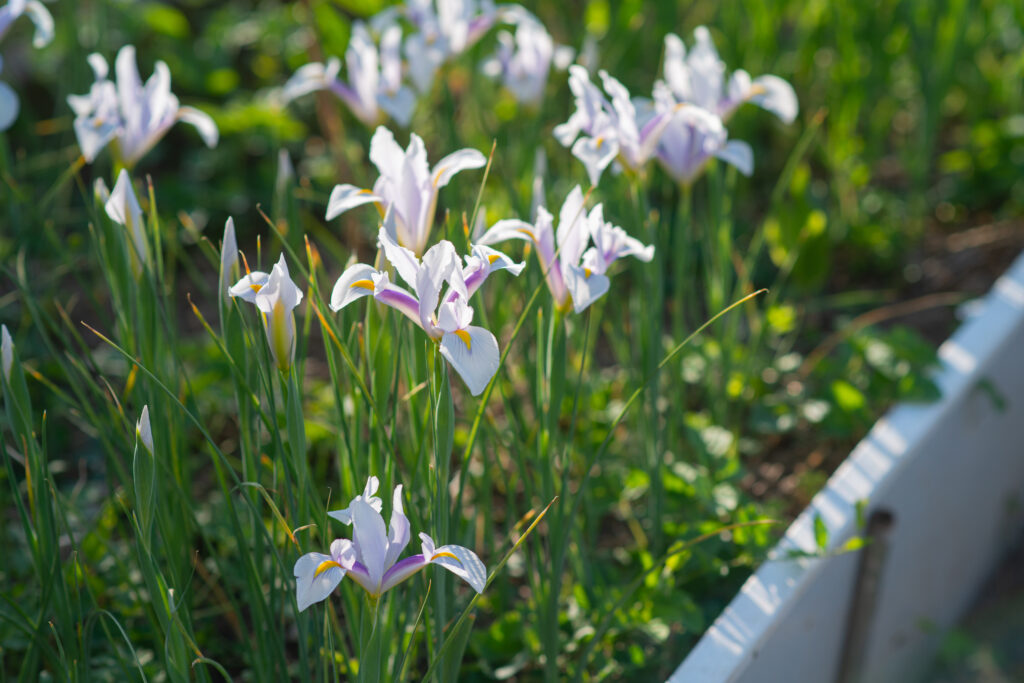Your cart is currently empty!
Category: Summer
-
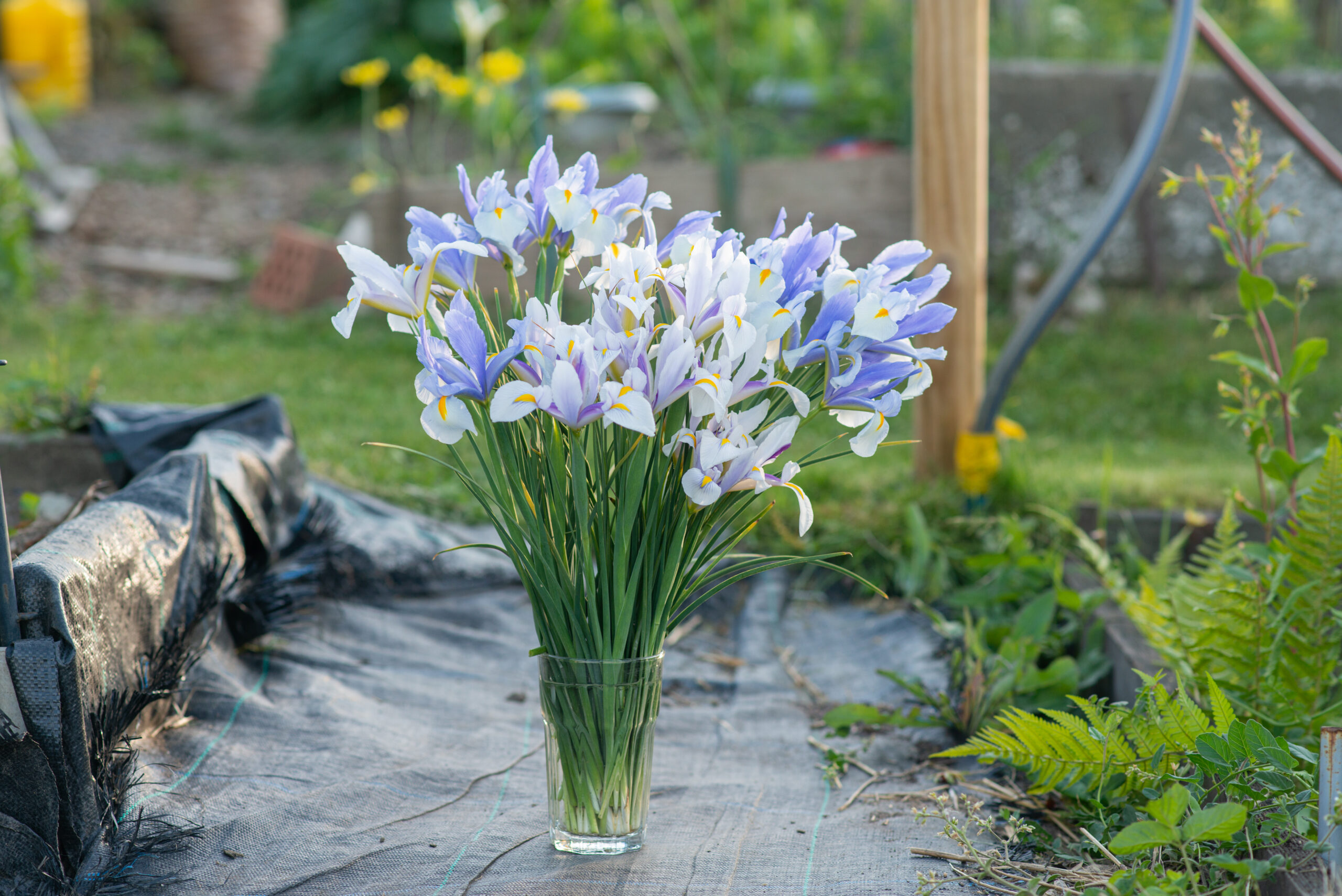
Dutch iris
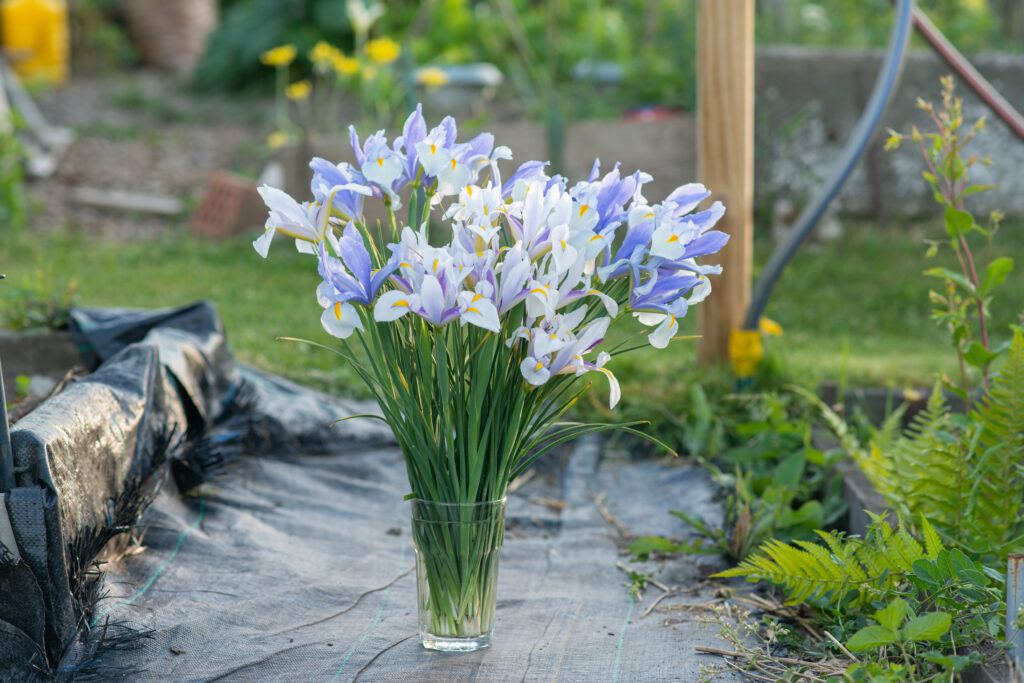
The Iris family is a diverse group of flowering bulbous plants.
There are several species of bulbous irises in this group from dwarf reticulated irises to tall Dutch irises and another species, bearded irises with large fleshy rhizomes.
Originating from various regions including Europe, Asia and North America, these perennials have enchanted gardeners for centuries with their stunning blooms and unique structure. Color palettes range from white and yellow to all shades of purple and pure blue, and all color combinations in between. There are varieties of solid colors and many with bright markings on the drooping leaves.
IRIS x HOLLANDICA
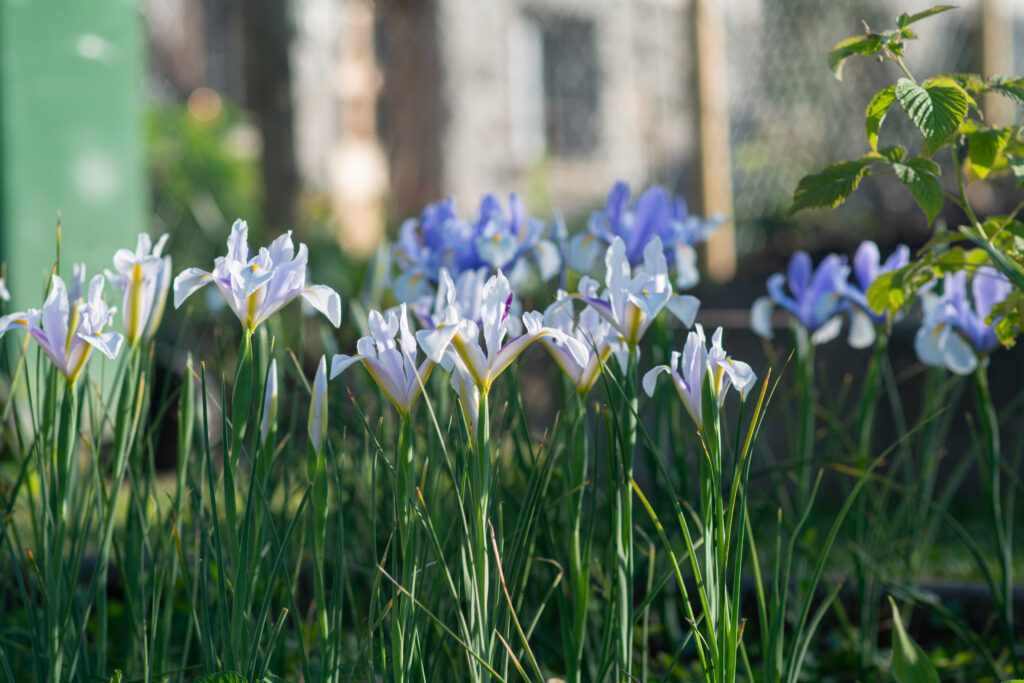
Dutch iris botanically called Iris x hollandica (Dutch Iris), was originally grown mainly as a cut flower and was created by crossing different species in the 19th century. The varieties developed by the famous Van Tubergen flower bulb nursery in the Netherlands were pioneering.
Dutch Iris flowers have become so beloved by gardeners that they are now increasingly common in gardens.
PLANTING
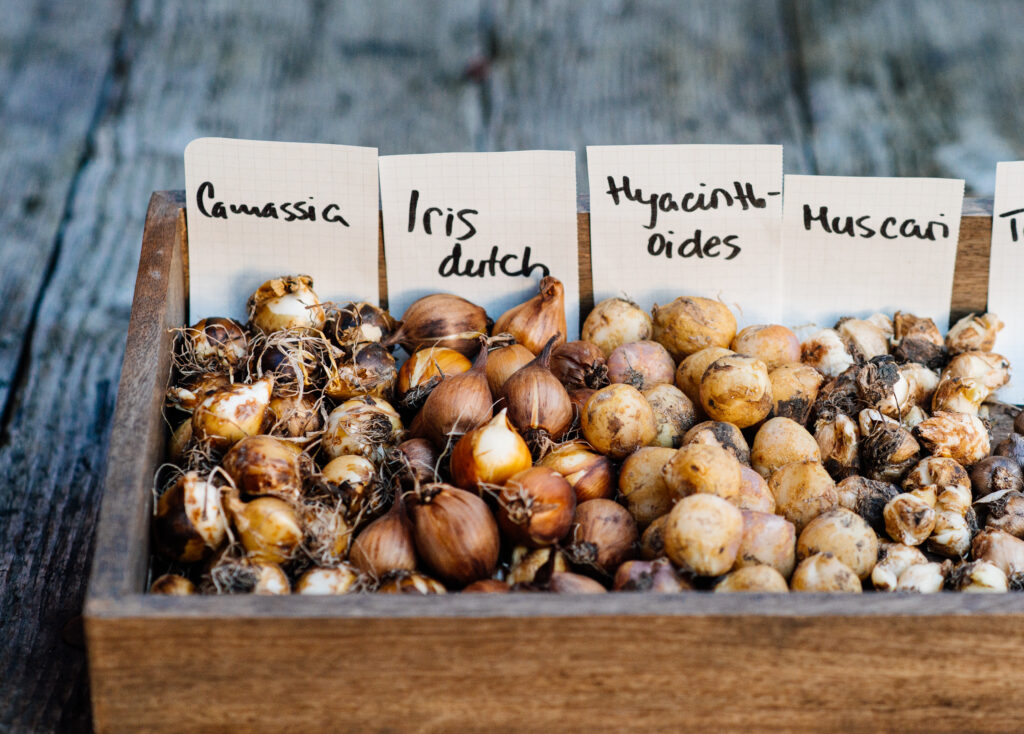
Iris bulbs are planted in the garden in the fall, from October to November, so that they have time to put down roots before the winter cold sets in.
It is not recommended to plant bulbs earlier, otherwise the young leaves that have broken through in early spring may freeze.
Iris bulbs grow well in any ordinary garden soil.
The place for planting should be chosen light, completely open to the sun.
Because irises originated from drought-loving wilderness, the soil must be well-drained.
Iris bulbs are hardy, can tolerate low temperatures and adapt to different climates, making them a versatile choice for a variety of garden conditions.
Plant bulbs at a depth of 10 centimeters with a distance from bulb to bulb of 10 centimeters.
Dutch iris is easy to grow in pots. A drainage layer laid on the bottom of the pot will not be superfluous.
All Iris species are fairly reliable in flowering. Dutch Iris can often fail to return the following year if they lack light.
The Dutch iris is a friendly plant. It looks more spectacular in the garden and grows best in groups if the bulbs are planted in bunches.
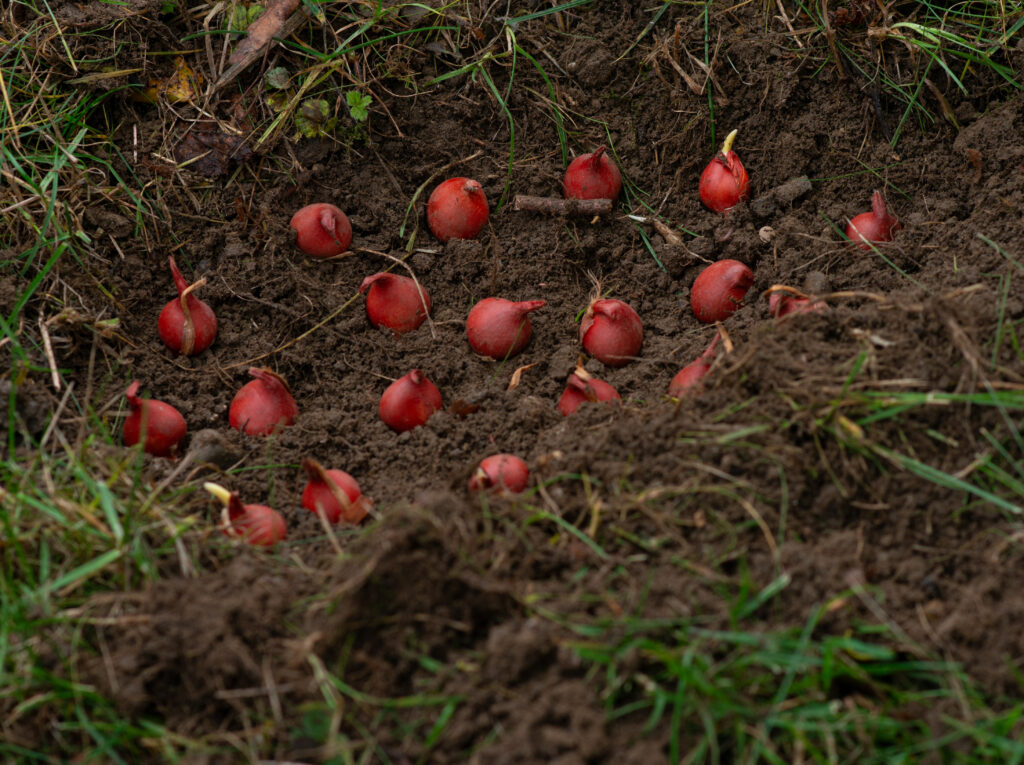
BLOOMING
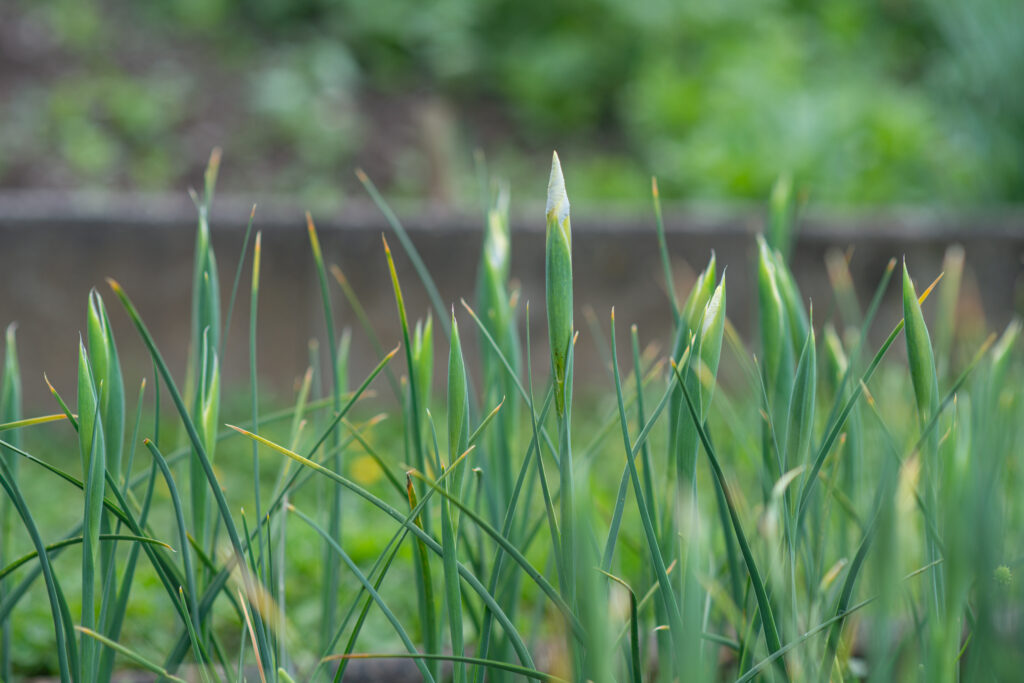
Dutch Iris, Dutch Iris is a late-flowering bulbous plant that blooms from late May through July, just after daffodils and tulips bloom.
Growing 45 to 60 centimeters tall, they are ideal for cutting.
MAINTENANCE
Iris bulb care includes regular watering, especially during dry periods, and a balanced fertilizer application in spring to maintain healthy growth and bright blooms. Mulching around the plants will help retain moisture and regulate soil temperature.
PROPAGATION AND PROTECTION
Dutch irises are propagated by bulbs. After the flowers have fully bloomed and the leaves have yellowed and shriveled, carefully, using a pitchfork, dig the clumps with bulbs out of the ground, divide and transplant them to another place in the garden. Bulbs can be divided and replanted every two to three years.
During the growing season, Dutch irises need plenty of moisture. As soon as the leaves turn yellow, the bulbs can be removed from the ground and stored in a dry place until the new planting date in the fall or late autumn. In favorable locations, they are left in the ground.
In very cold regions, cover the bulb planting sites and sprouted leaves too early, e.g. with spruce branches. Bulbs cannot tolerate standing winter moisture.
When planting, it is important to take care and protect the bulbs from mice and other rodents.
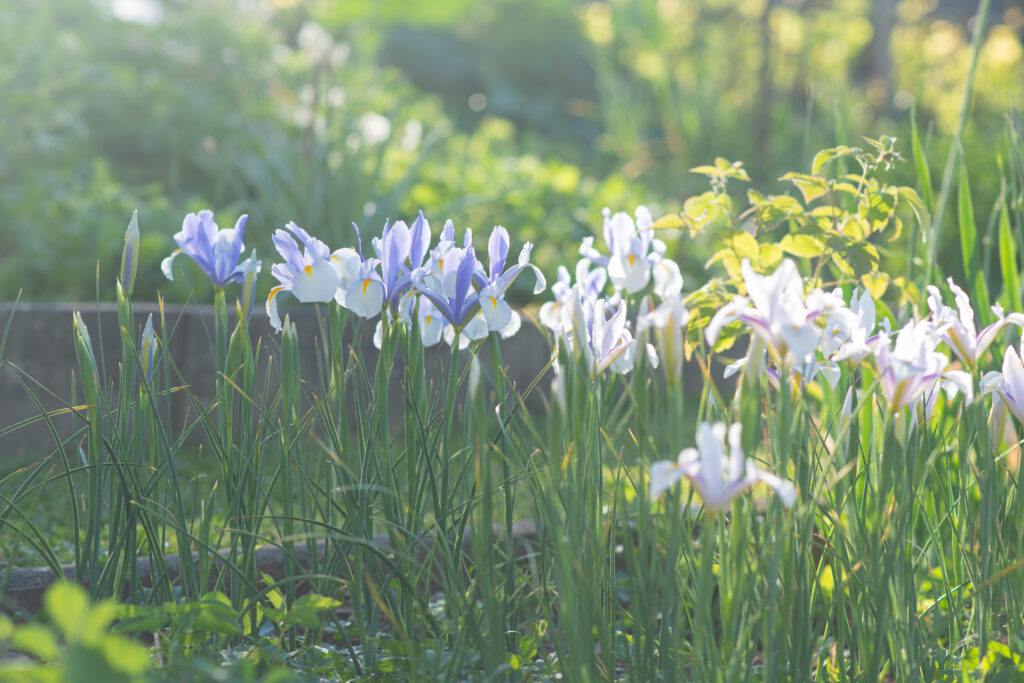
Dutch Iris Silvery Beauty
Dutch Iris Carmen
-
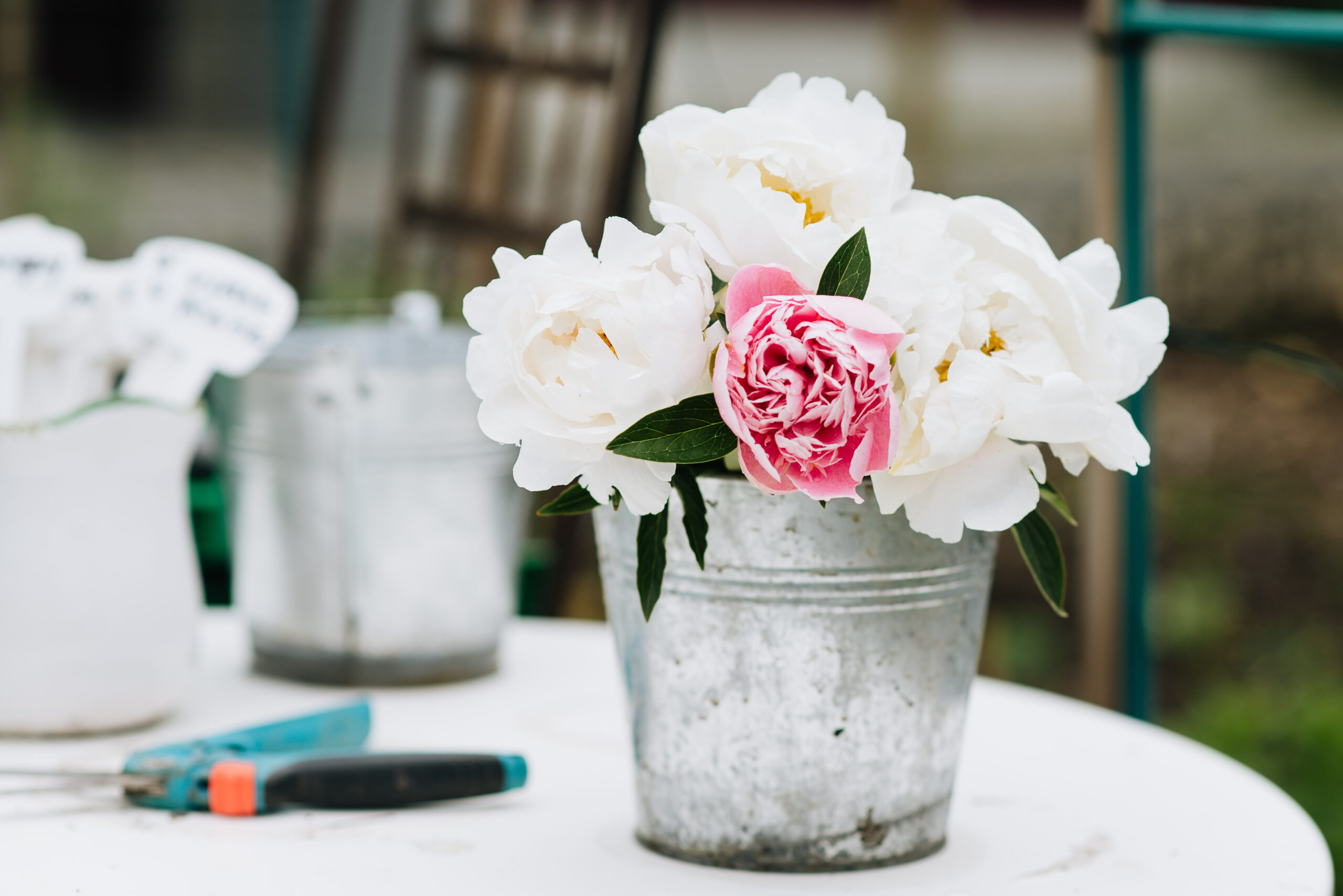
Peonies and ants
When you touch your peonies in the "bud stage", you can immediately feel a sweet, sticky liquid on your fingers that resembles the consistency of sugar syrup. It is useful to know that this liquid substance is non-toxic and can be easily washed off your hands and clothes.
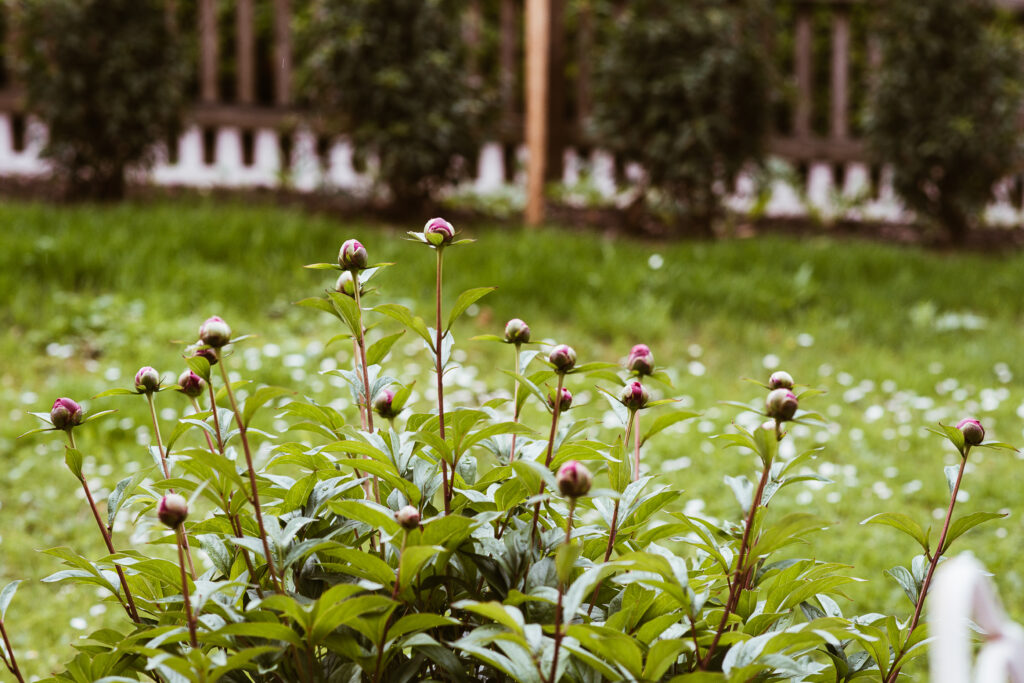
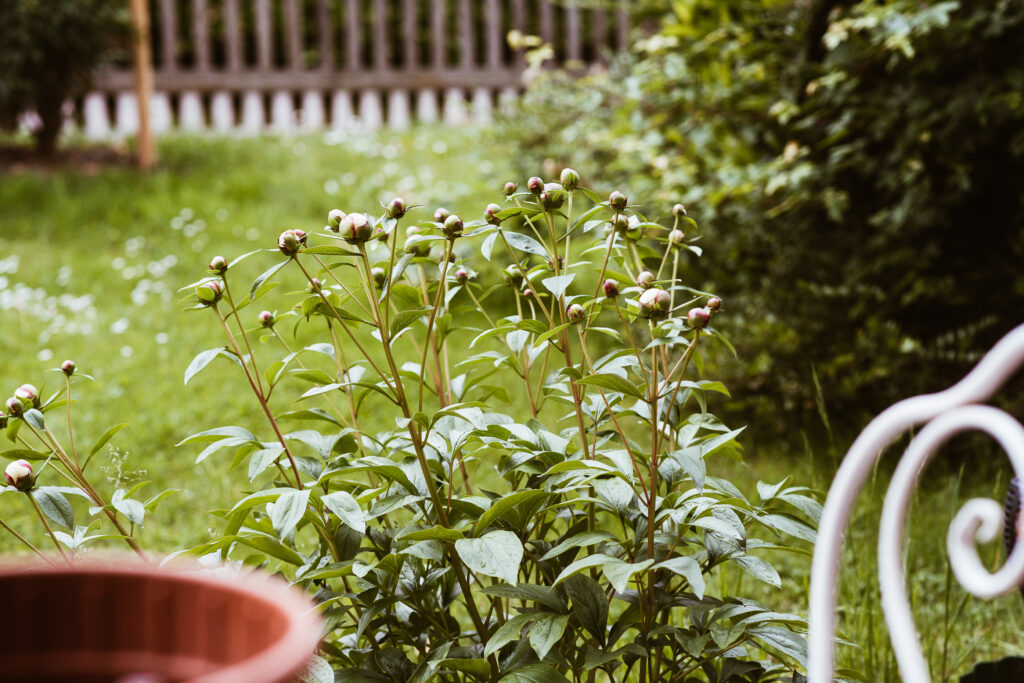
The flowers are believed to produce this nectar during the last phase of growth, just before the flower opens, so their petals remain tightly closed. The petals are literally "glued" together. This prevents any damage to the reproductive organs.
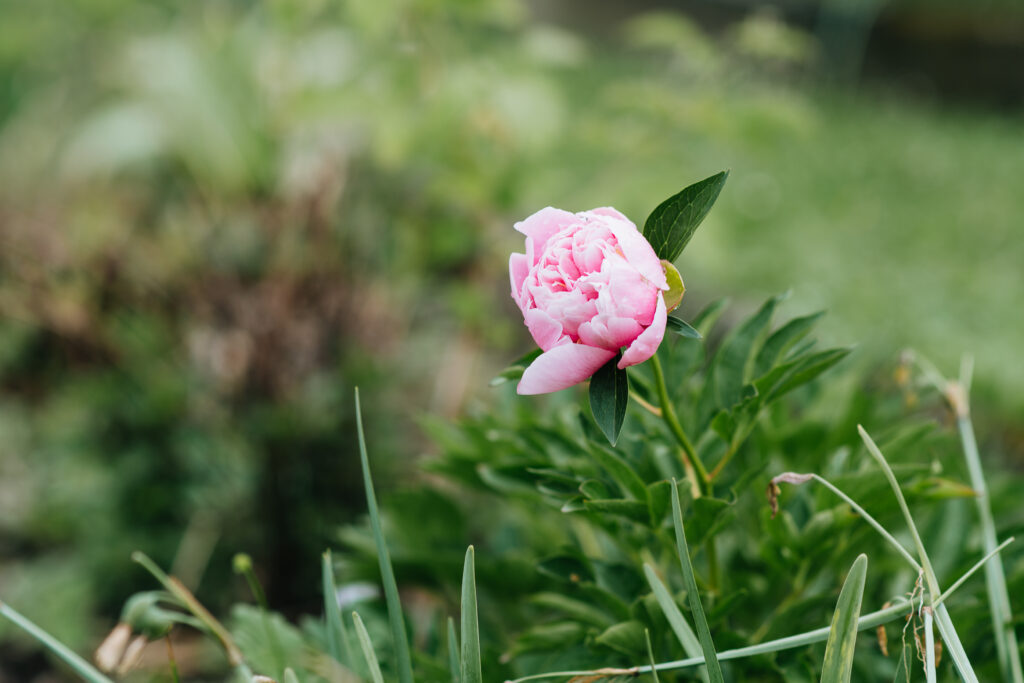
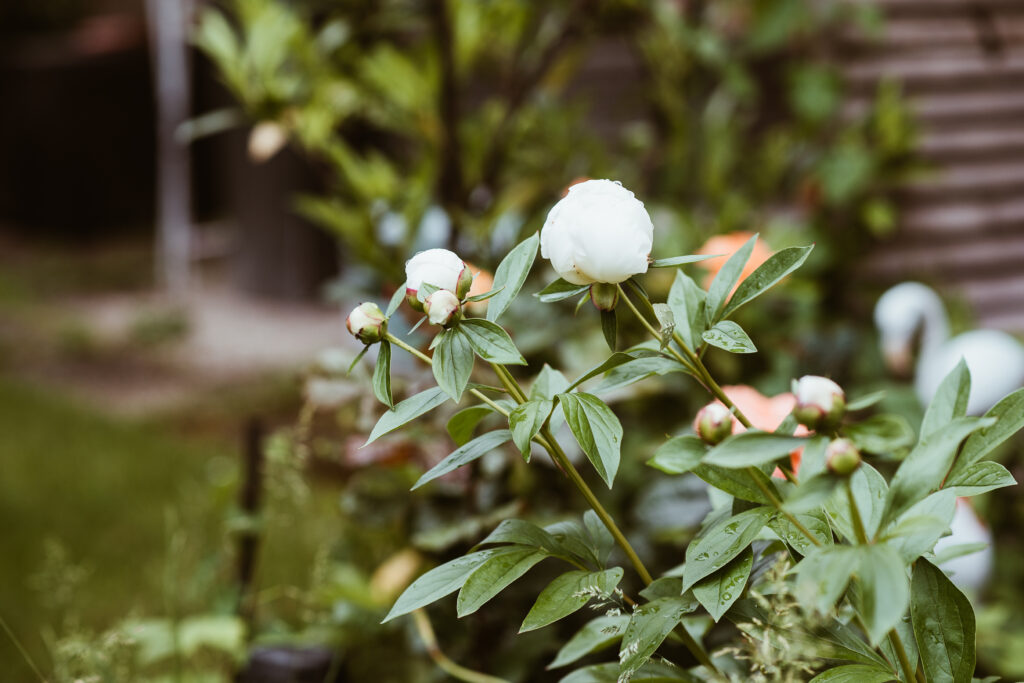
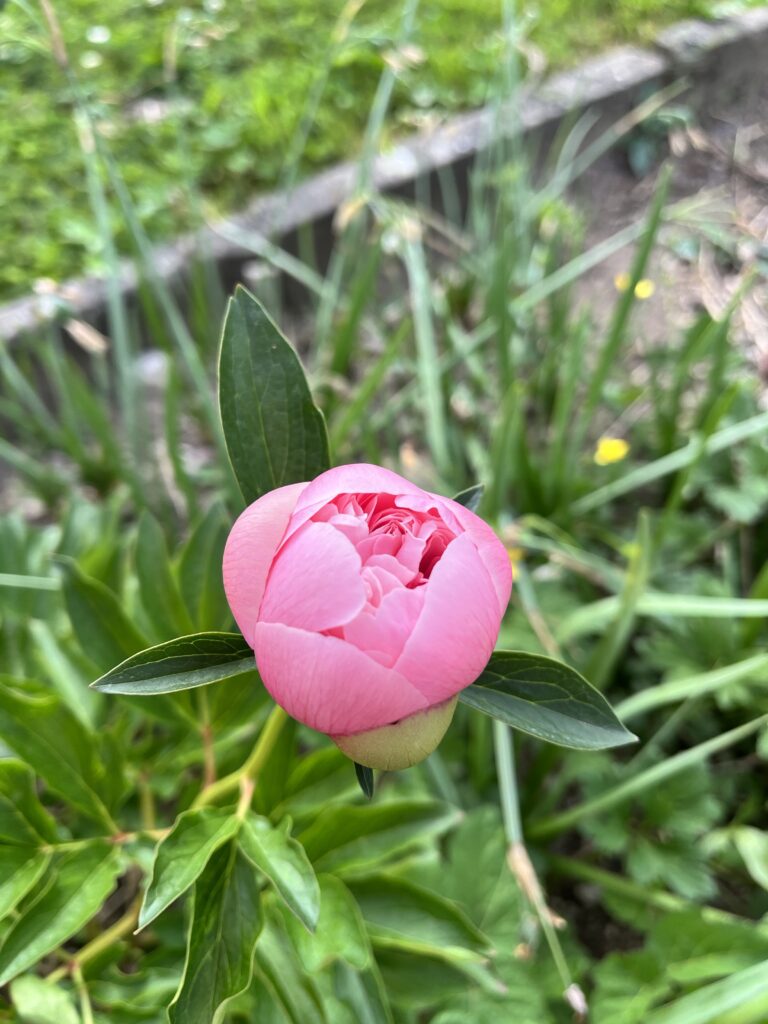
Ants are crazy about this nectar and love it very much. Sometimes you may see many ants on peonies when the plants are in the "bud stage". Ants are not a threat to your peonies. Just let them enjoy the nectar. You will also notice that once the flowers start to open, the ants will disappear on their own.

However, it happened to me once that I accidentally brought home ants in freshly cut flowers. Since then, I carefully inspect the flowers, leaves and stems before putting them in a vase.
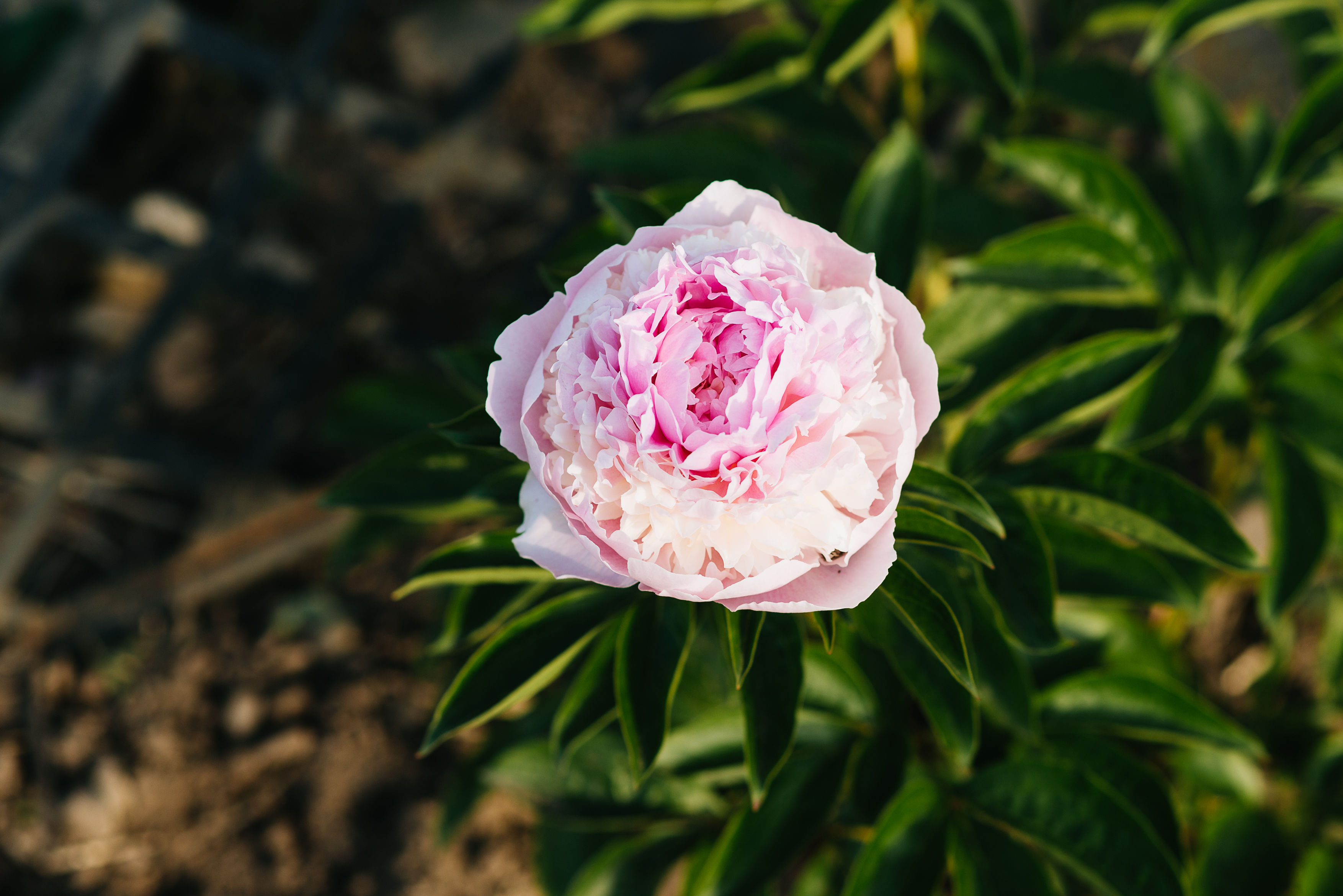
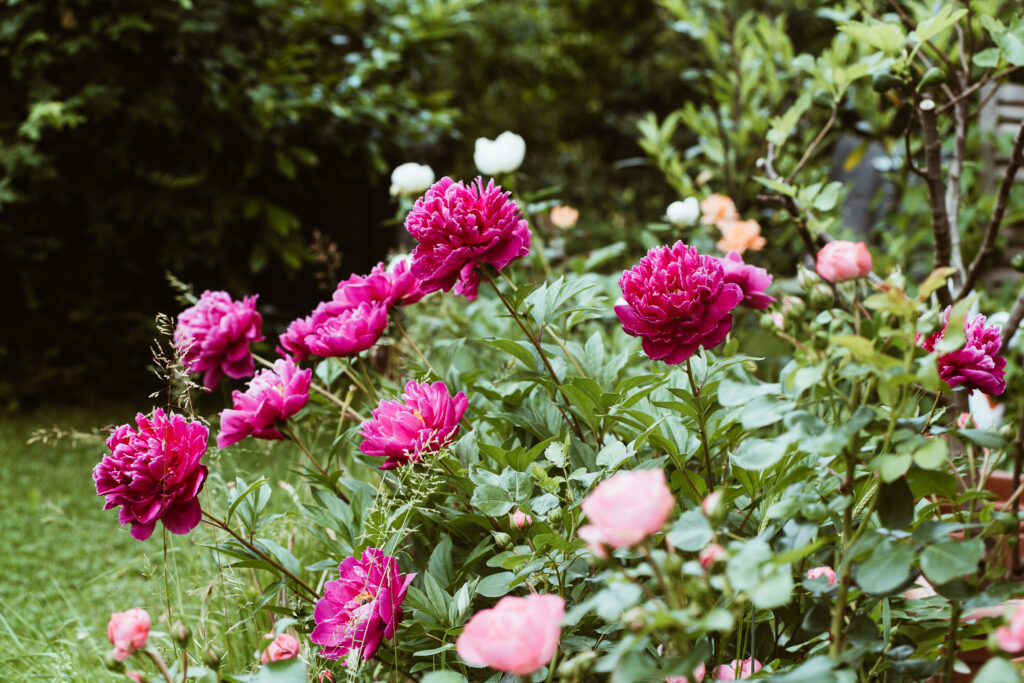

I hope you have learned something new from this text.
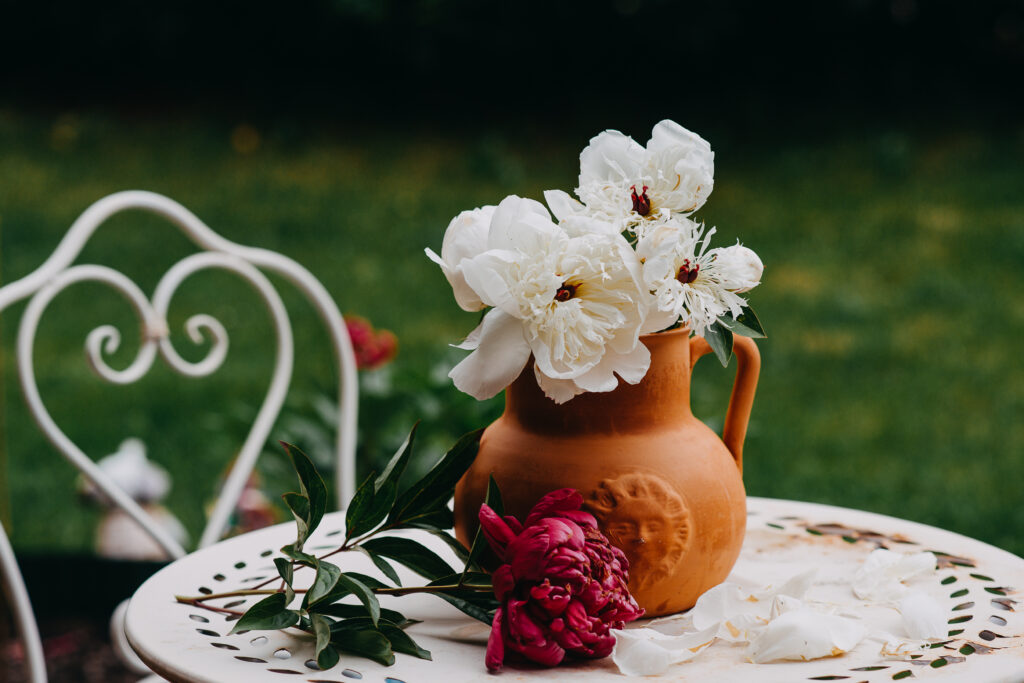
-
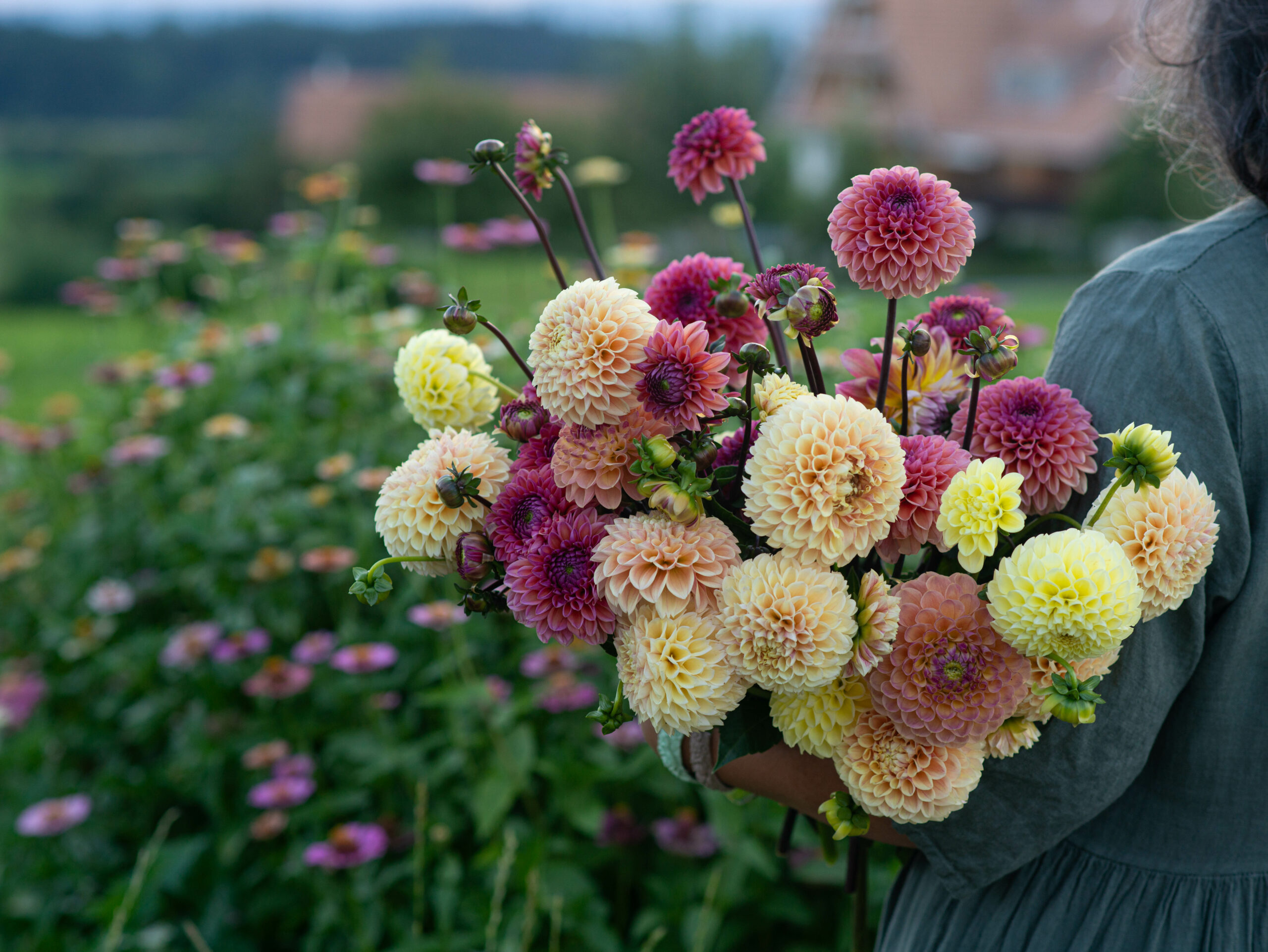
Why do we love dahlias?
Dahlias are one of the most beloved flowers among gardeners and florists, and here are some reasons why they are so prized:
1. Variety of shapes and colors
Dahlias amaze with their diversity. They can be double, semi-double, spherical, cactus-shaped and many other forms. The color palette includes almost all shades, which makes them universal for any garden or bouquet.
2. Long flowering
Dahlias delight with flowers from mid-summer until the first frosts. They fill the garden with bright colors when many other plants have already finished blooming.
3. Easy to care for
Although dahlias require some attention, they are not too difficult to grow. Gardeners love them for their ability to adapt to different conditions with the right care.
4. Decorativeness
Dahlias decorate not only the garden, but also the home. They look great in bouquets and compositions, stand well in water and are suitable for a variety of stylistic solutions.
5. Symbolism
Dahlias are associated with gratitude, grace and change. They are often given as gifts as a symbol of respect and admiration.
6. Reproduction and collecting
Dahlias are easily propagated by tubers, which makes them popular among collectors. Every year you can find new varieties and add to your collections.
Dahlias are a combination of beauty, sophistication and practicality, which is why they are so loved in gardens and floristry.
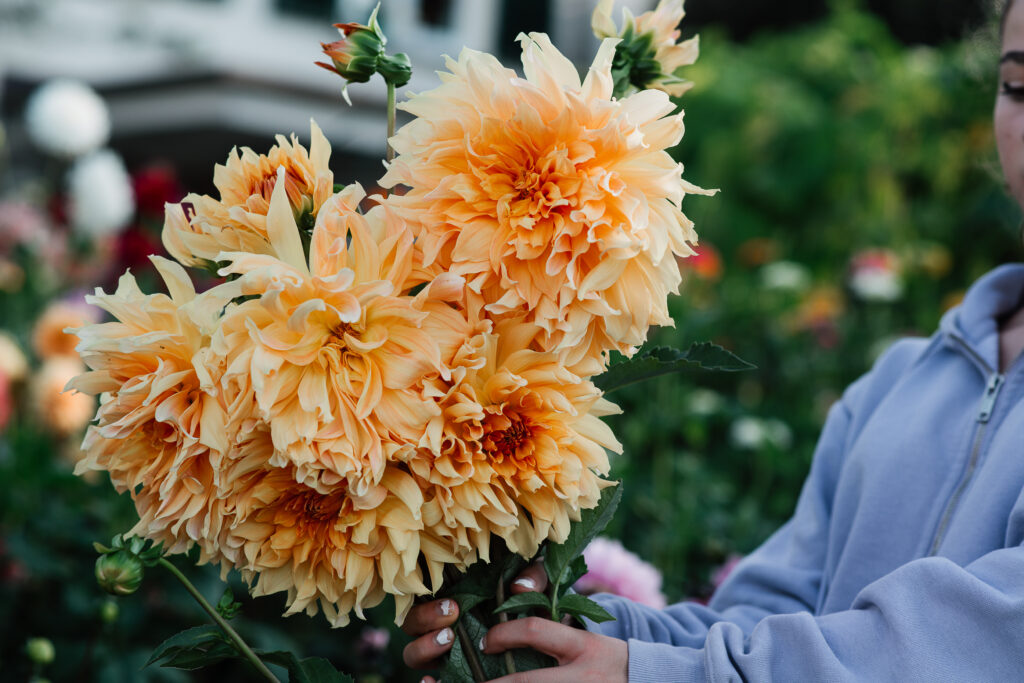
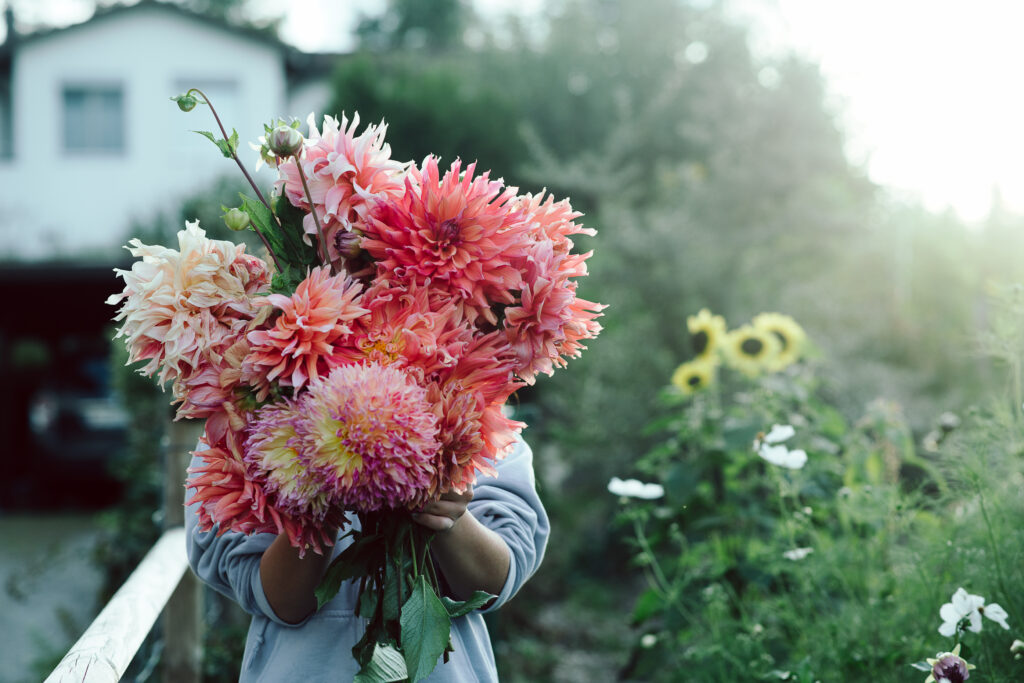
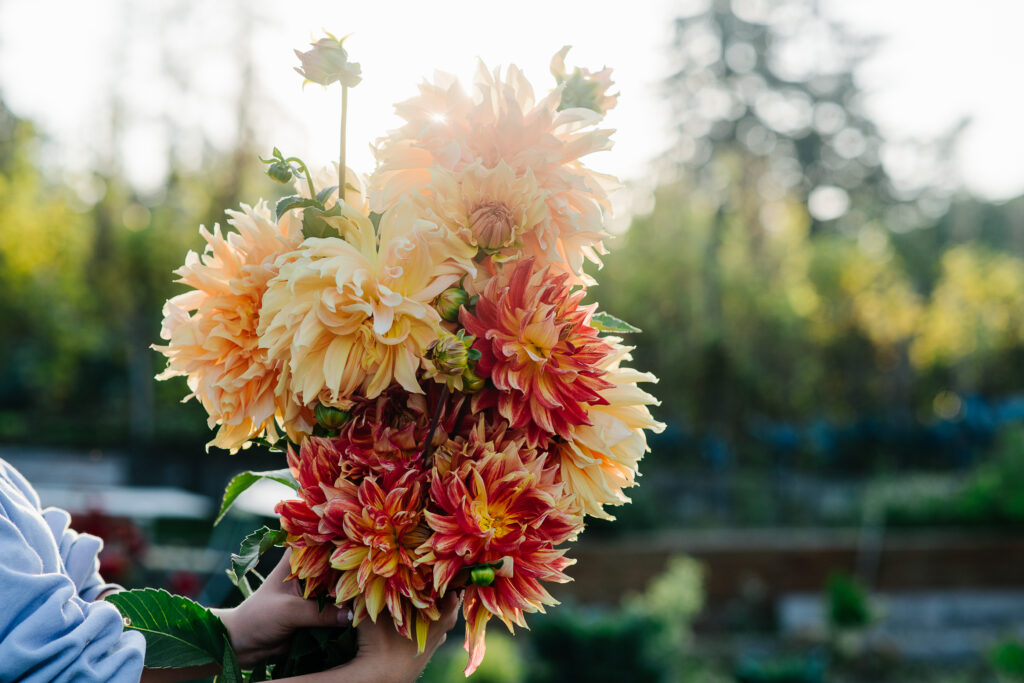
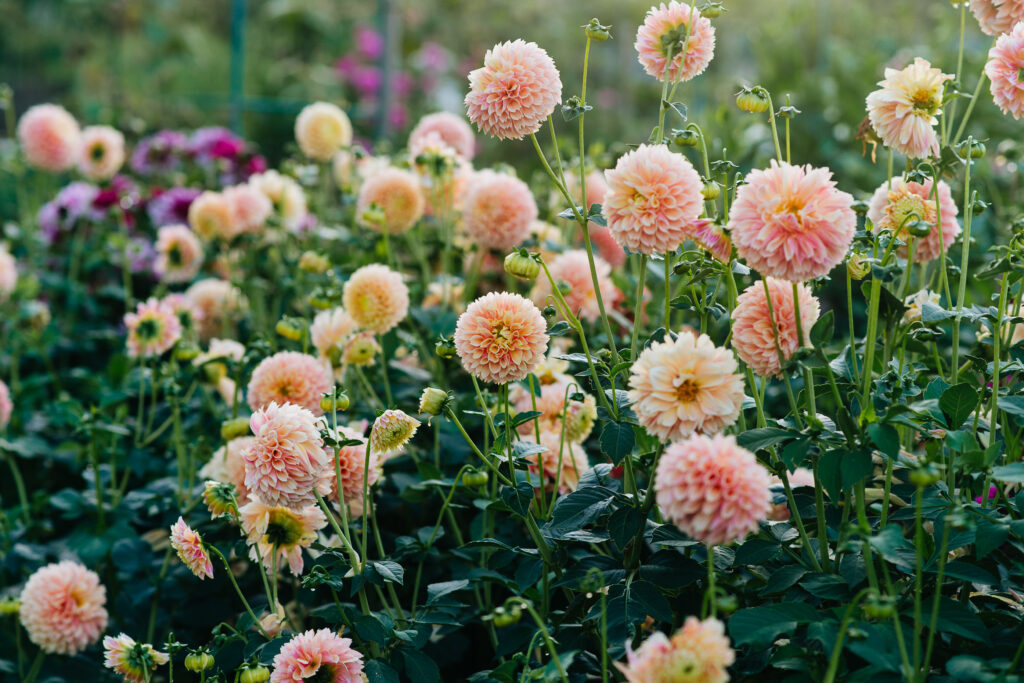
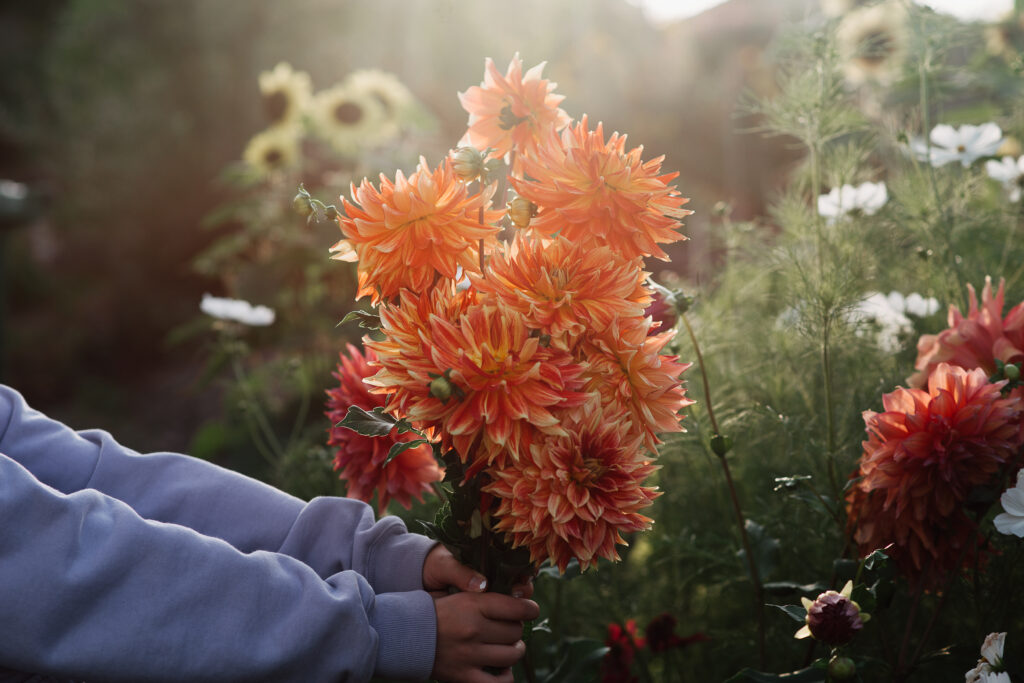
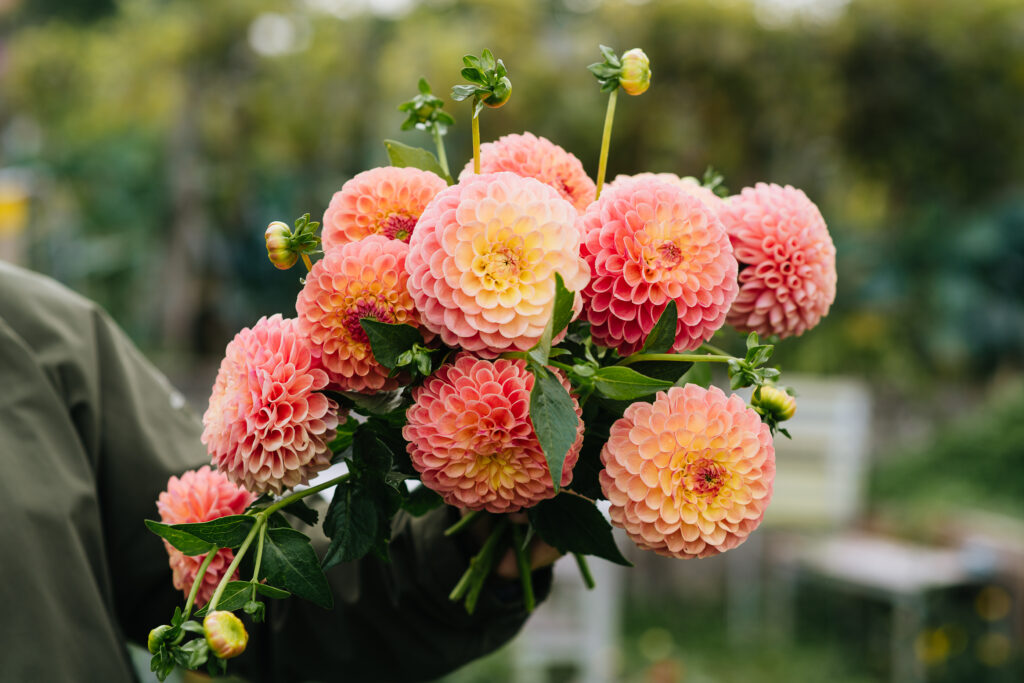
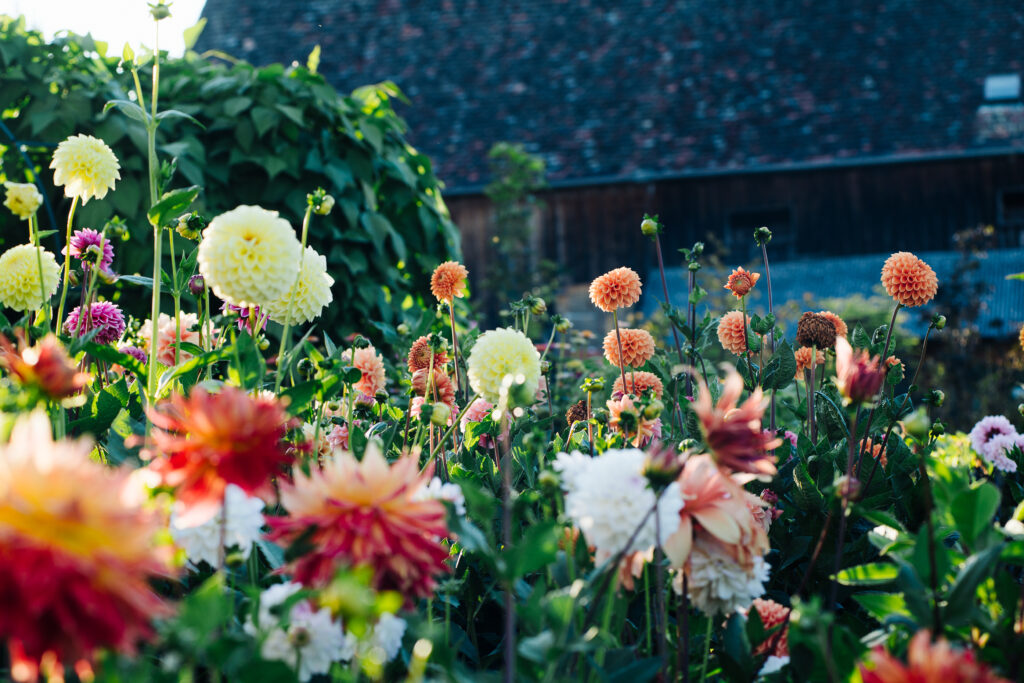
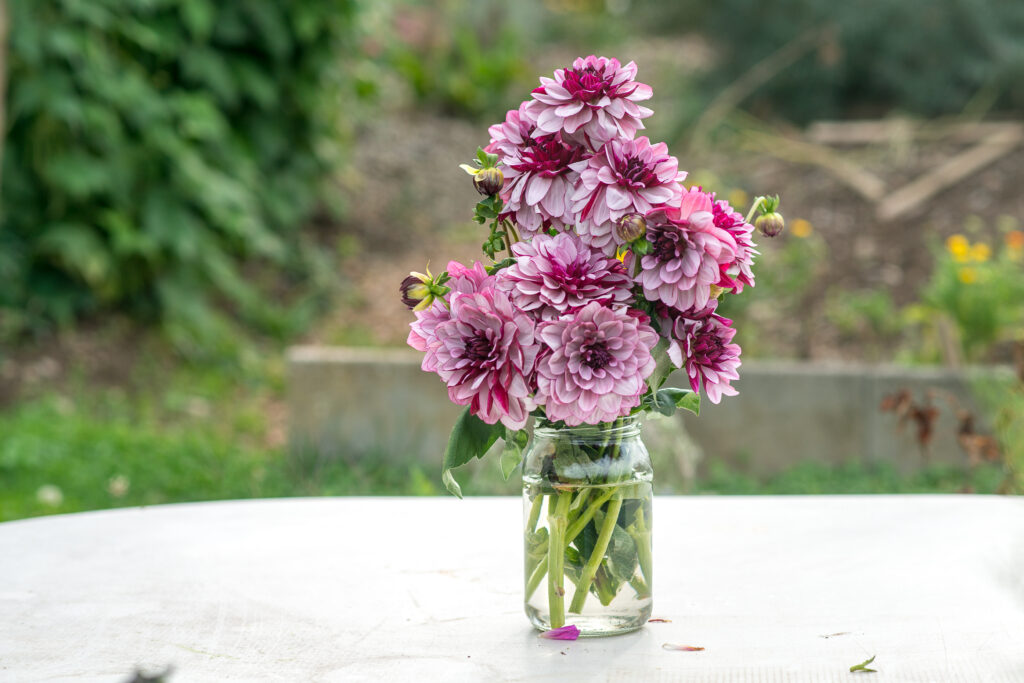
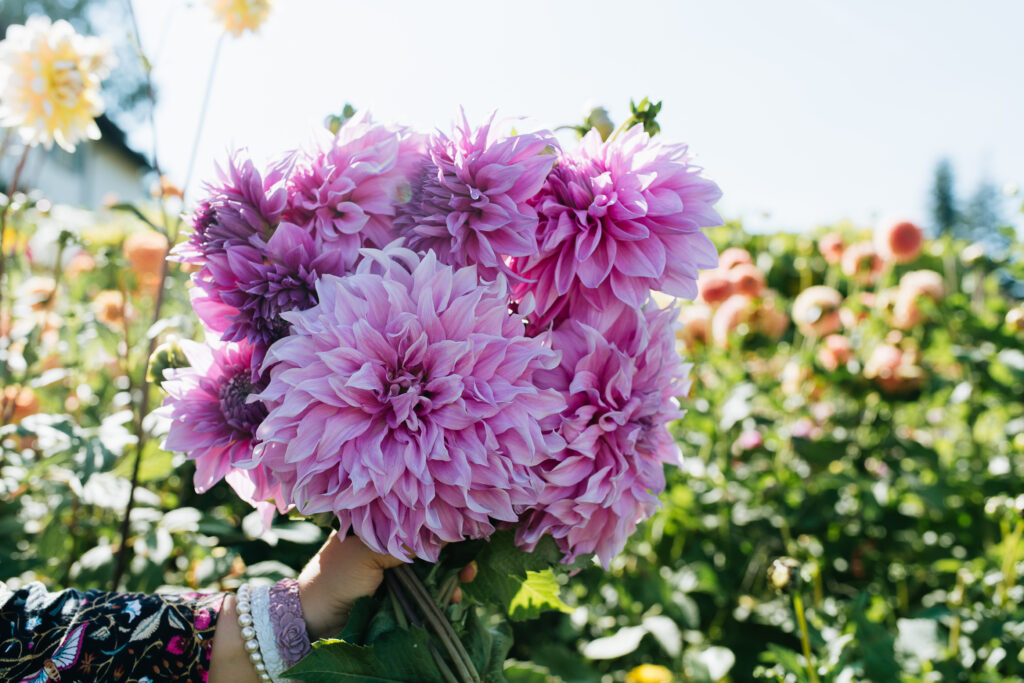
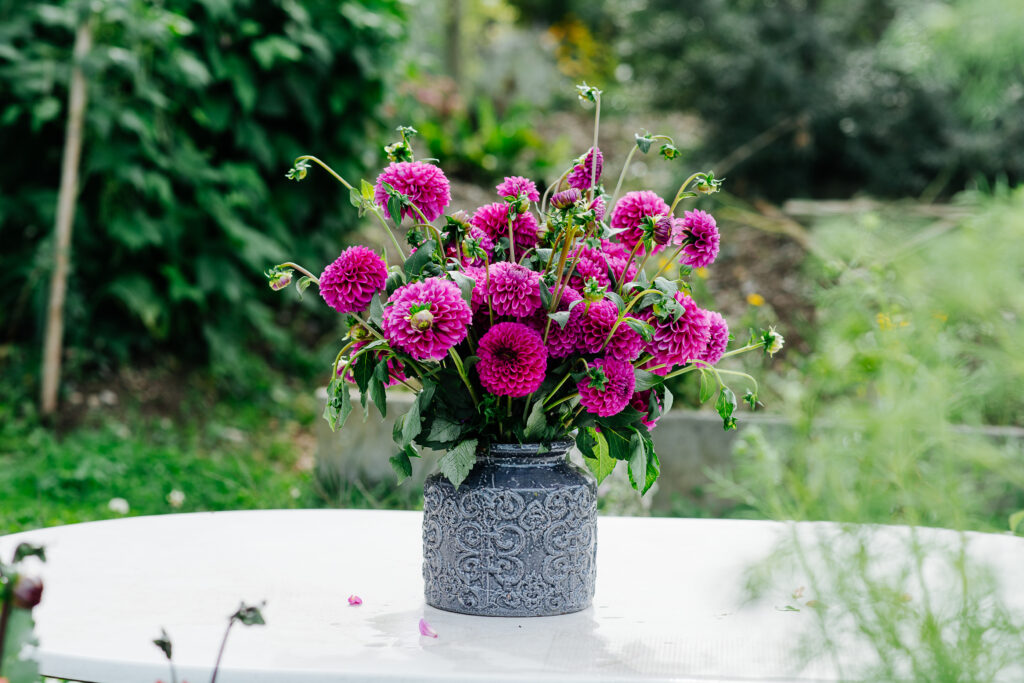
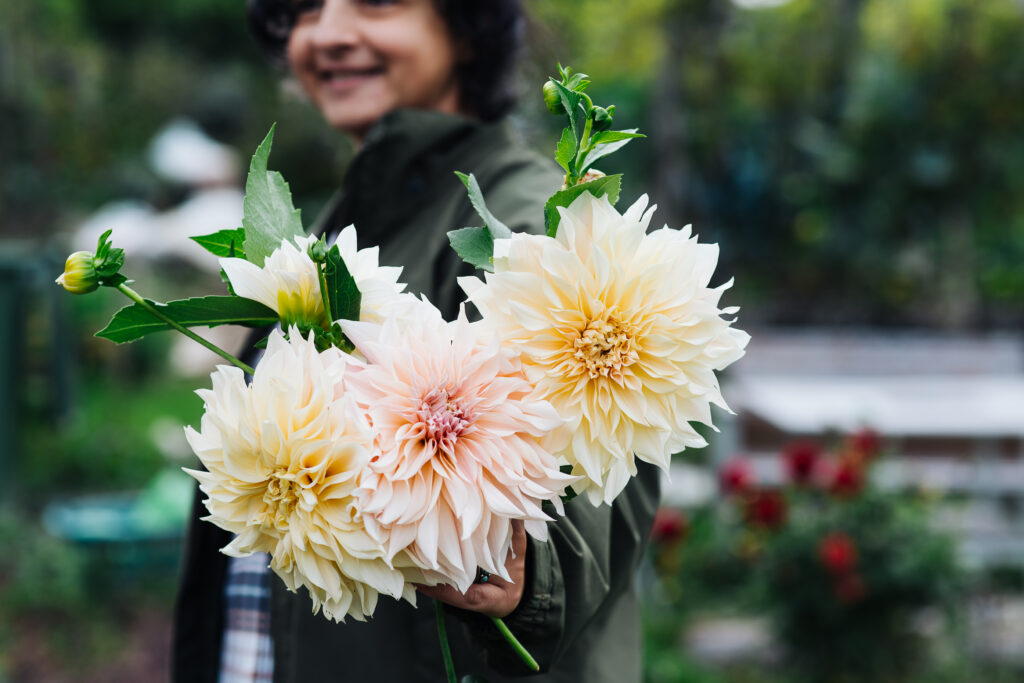
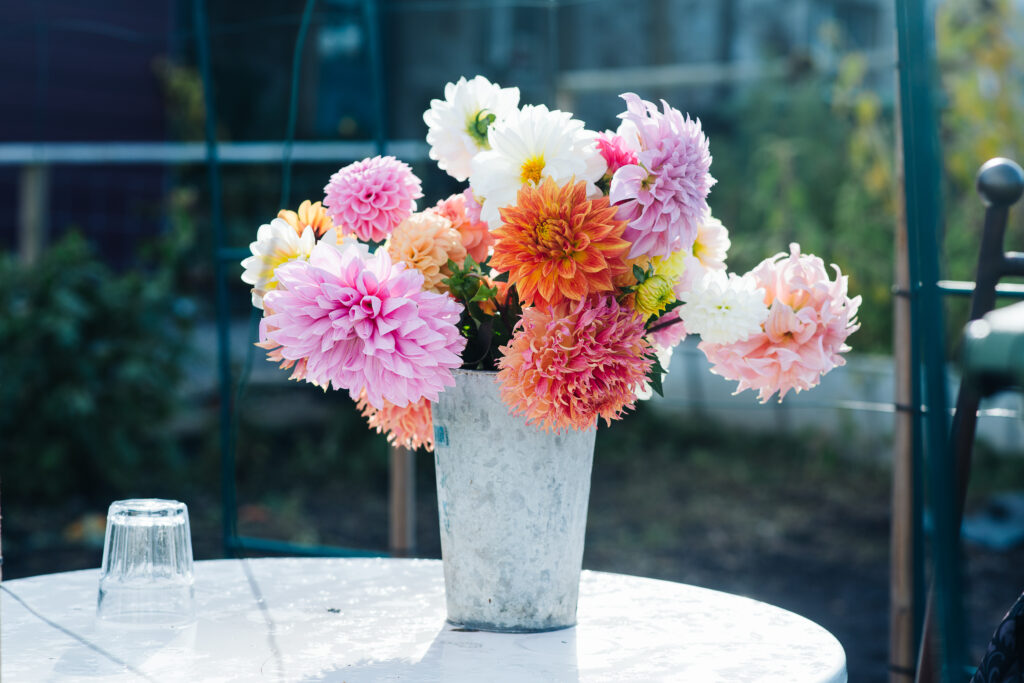
-
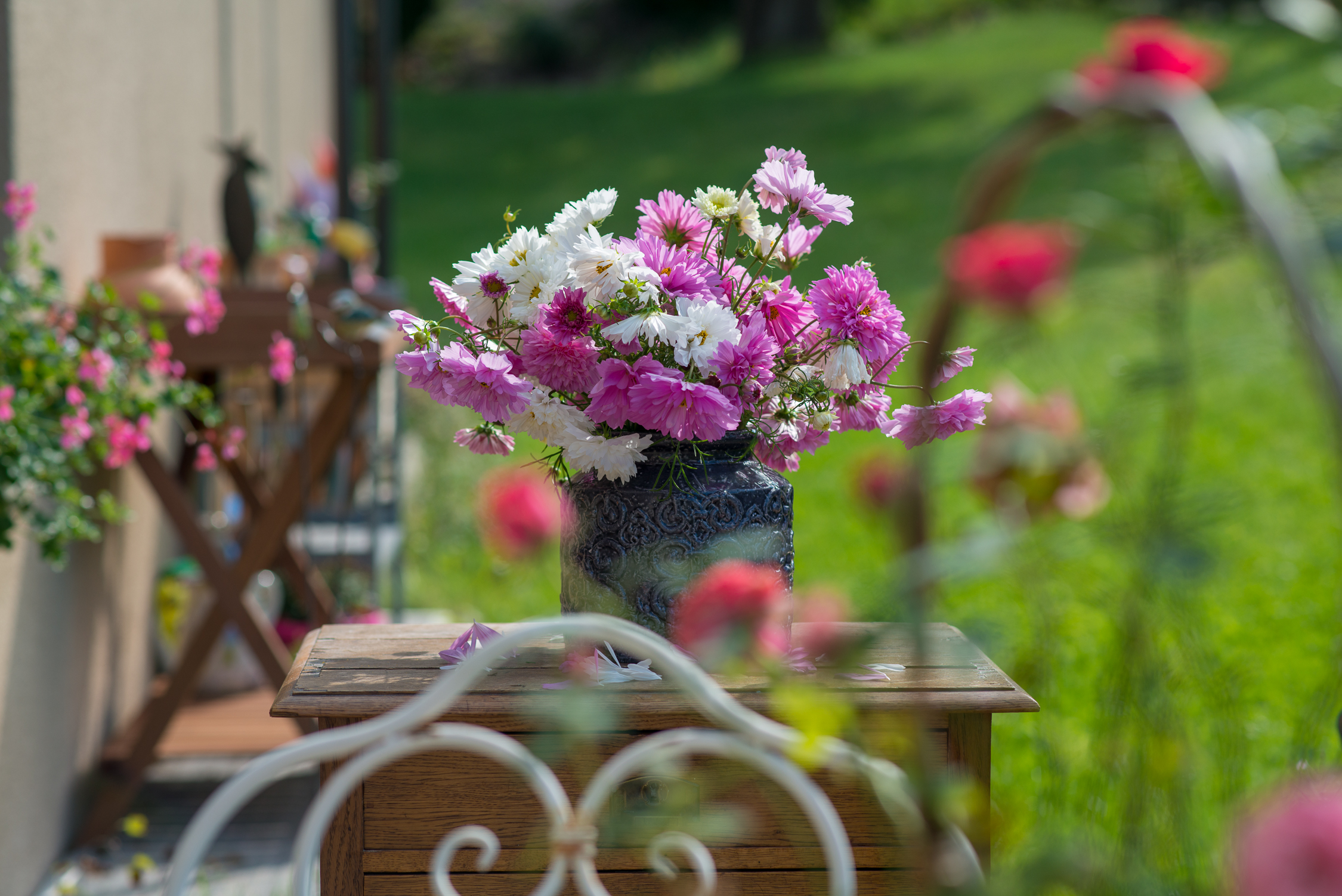
Cosmos. Summer - Fall 2021

Cosmos are one of the most beautiful summer flowering plants with delicate flowers. Cosmos blooms begin in July and often continue until October, with large basket-shaped flowers often visited by bees and butterflies.



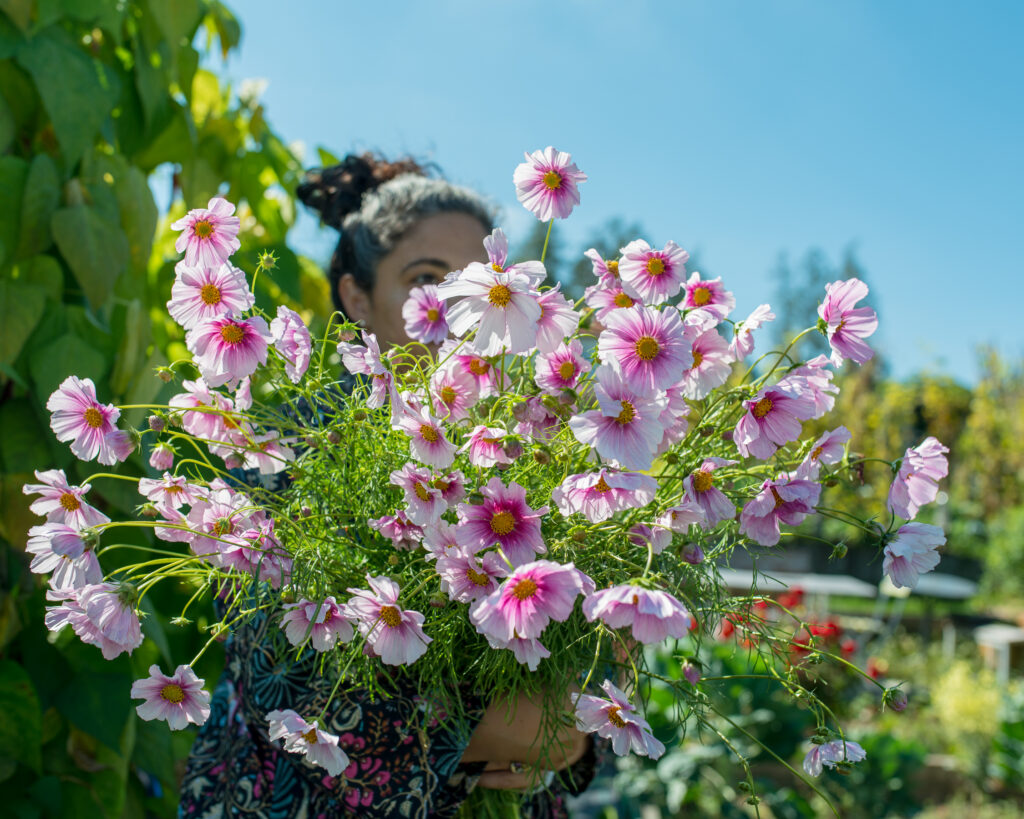





-
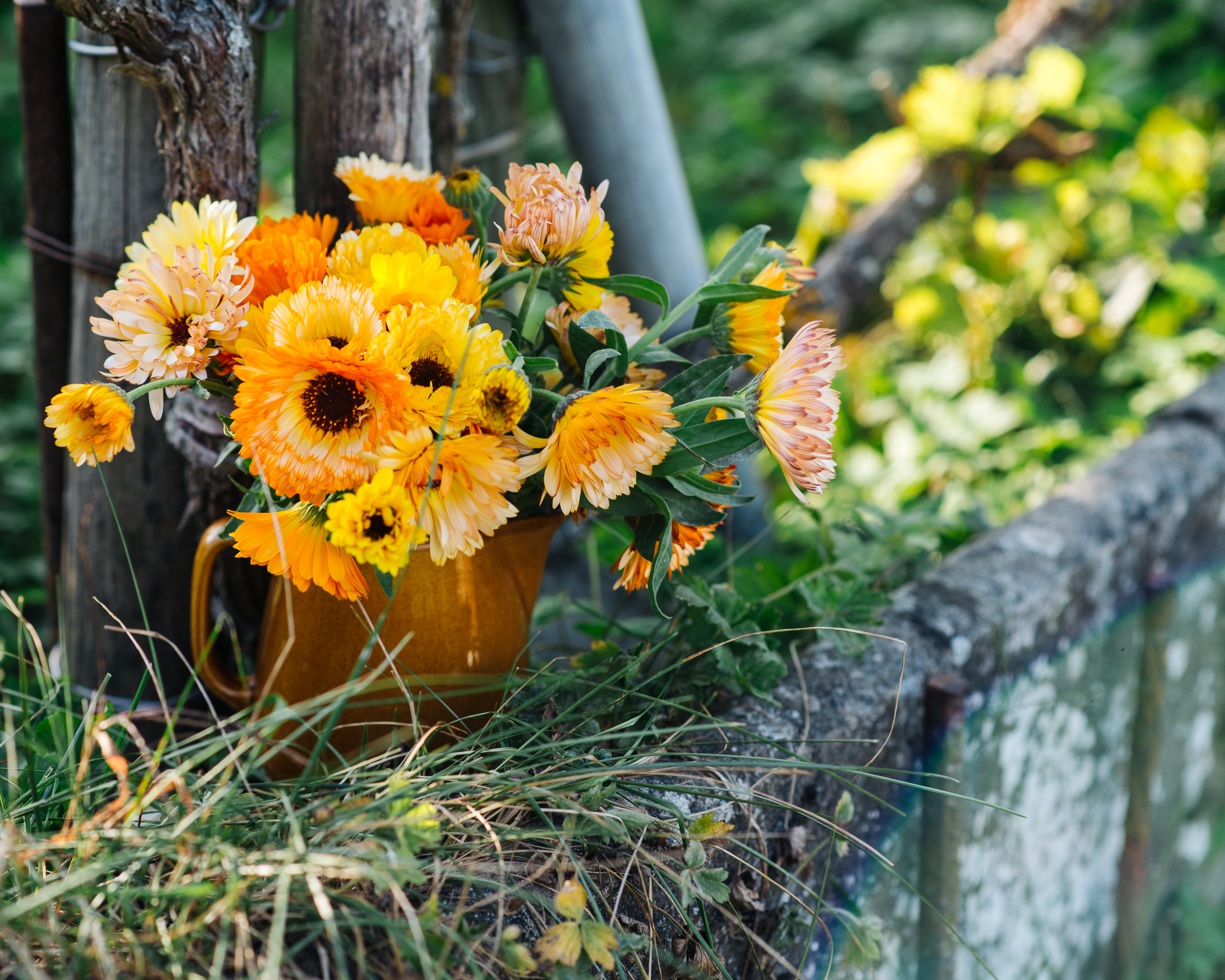
Summer - Fall 2021
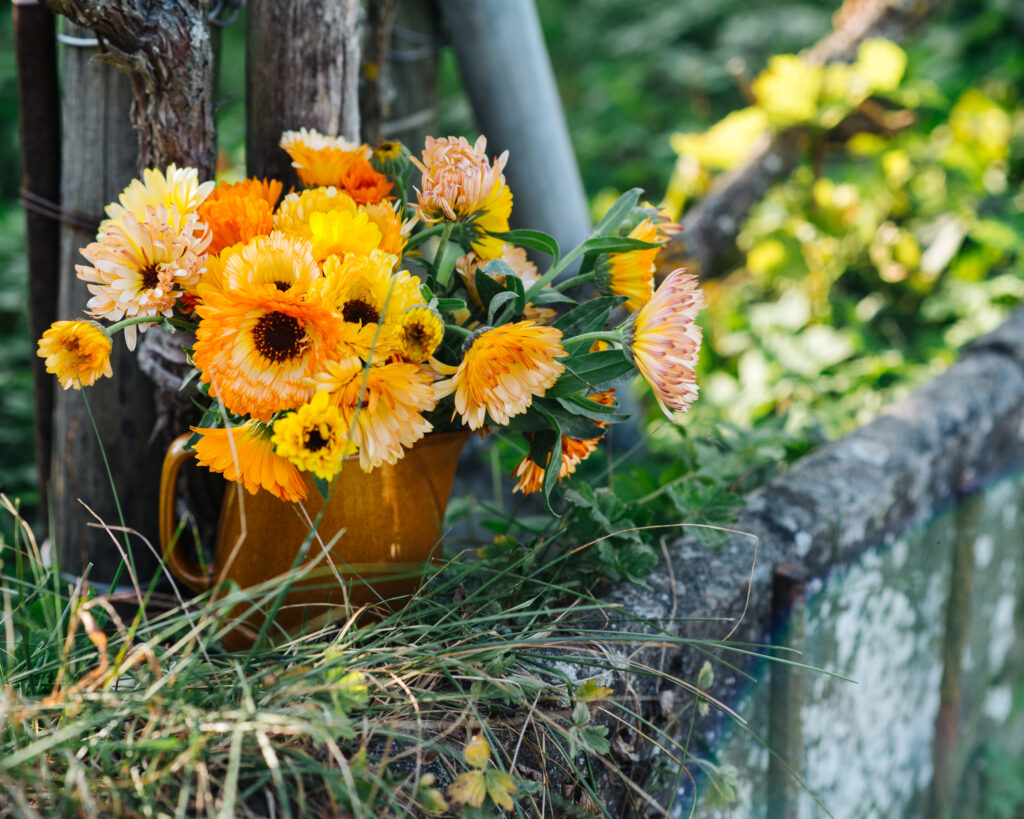
Cornflowers, calendula, amaranth, pumpkin and beans brought a lot of color and joy to our garden. All these flowers bloom from the end of July until the first frosts and are the most productive cut flowers.
AMARANTH
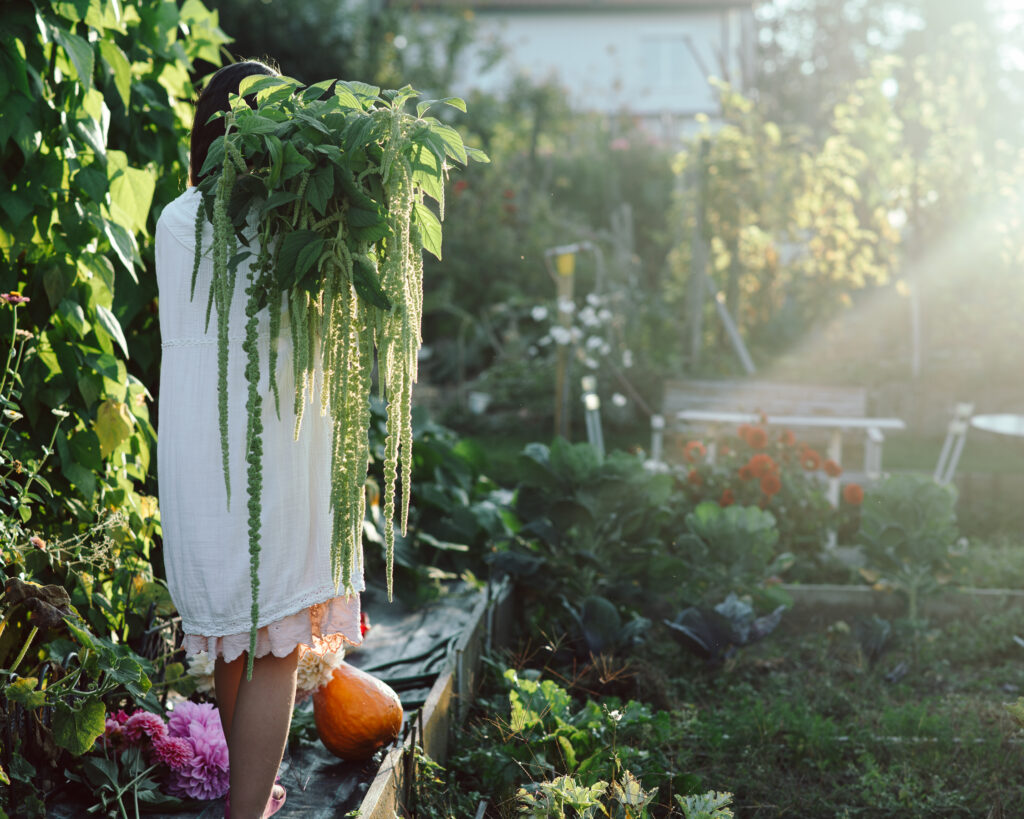
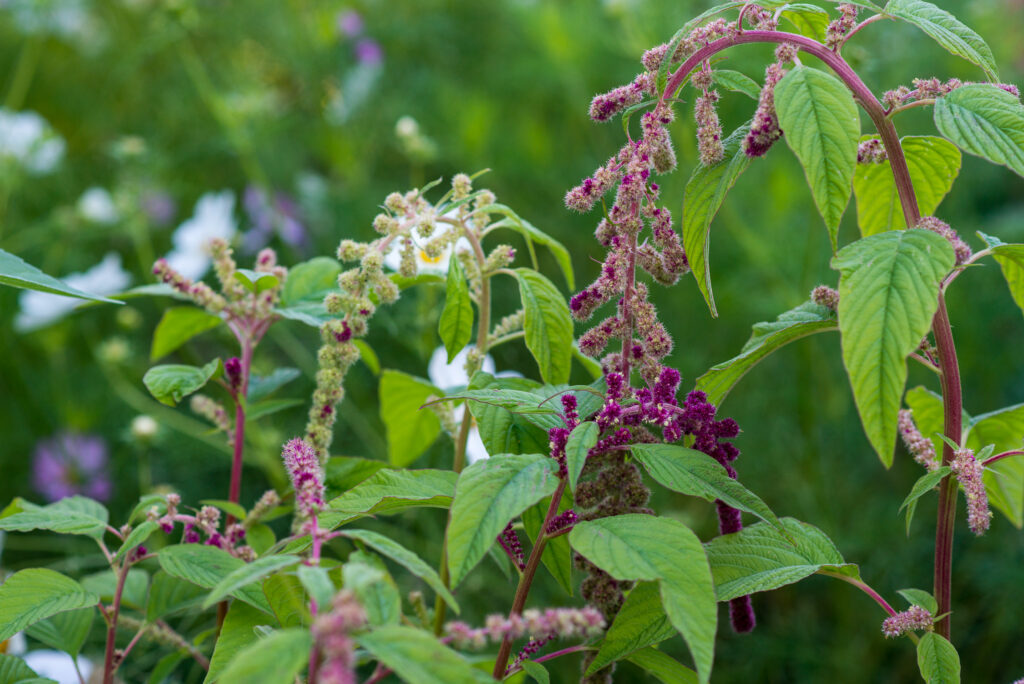
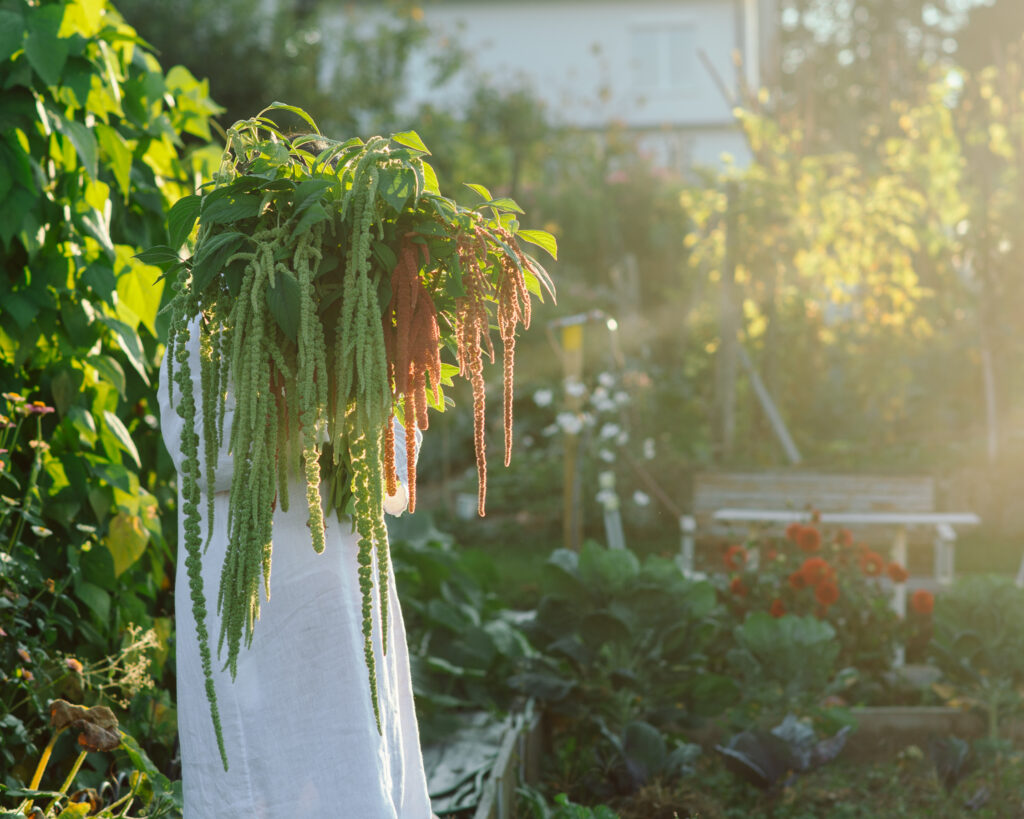
PUMPKINS AND BEANS


